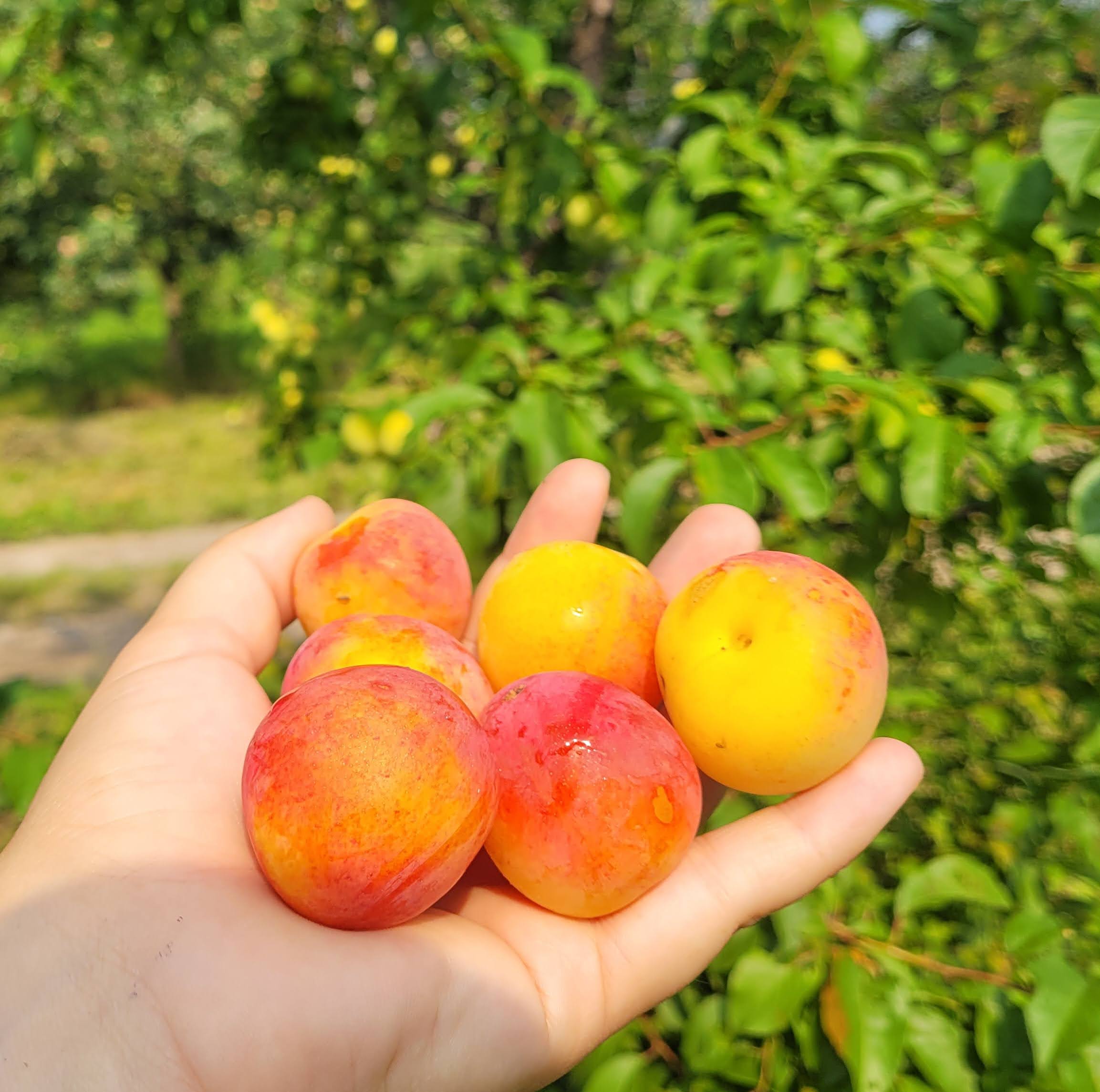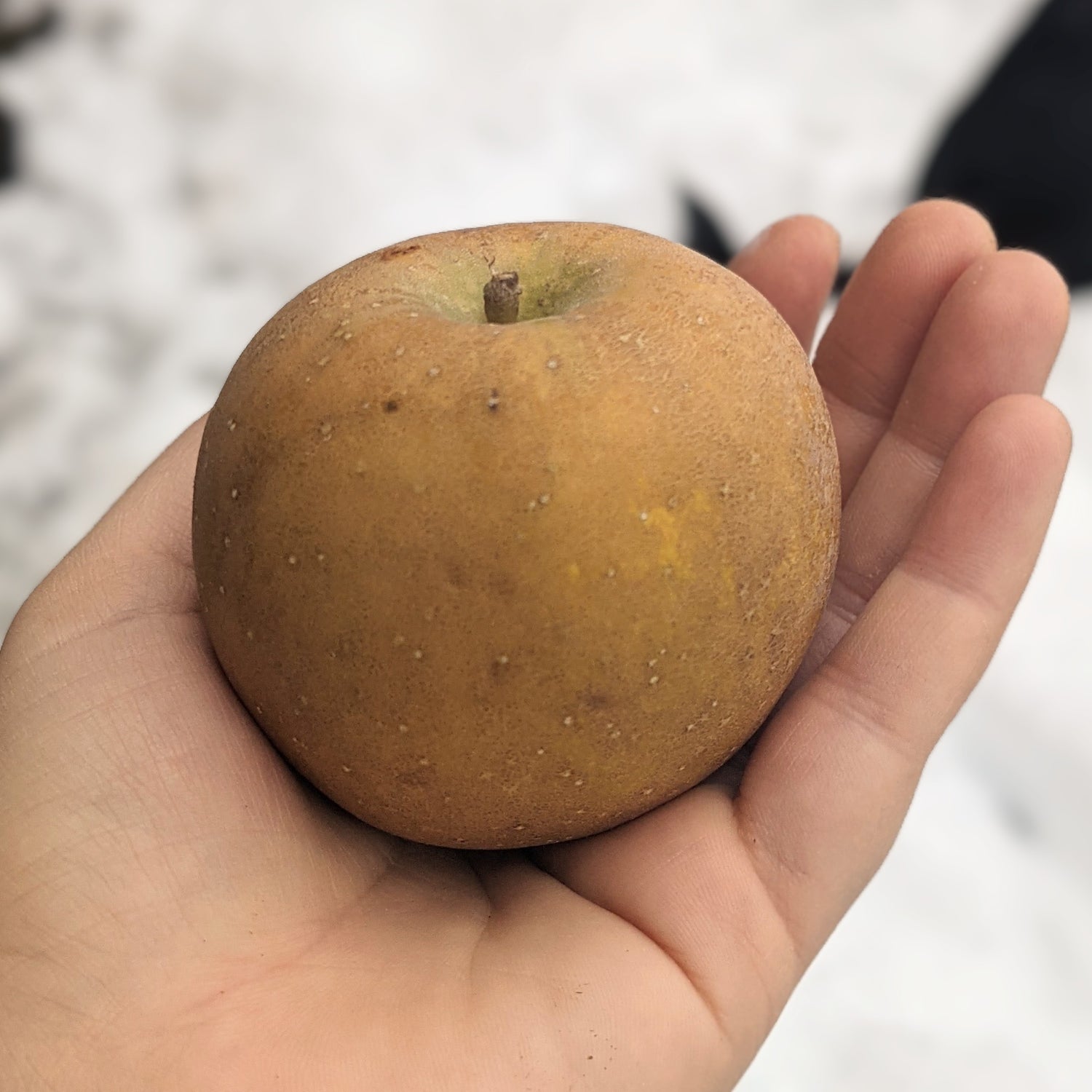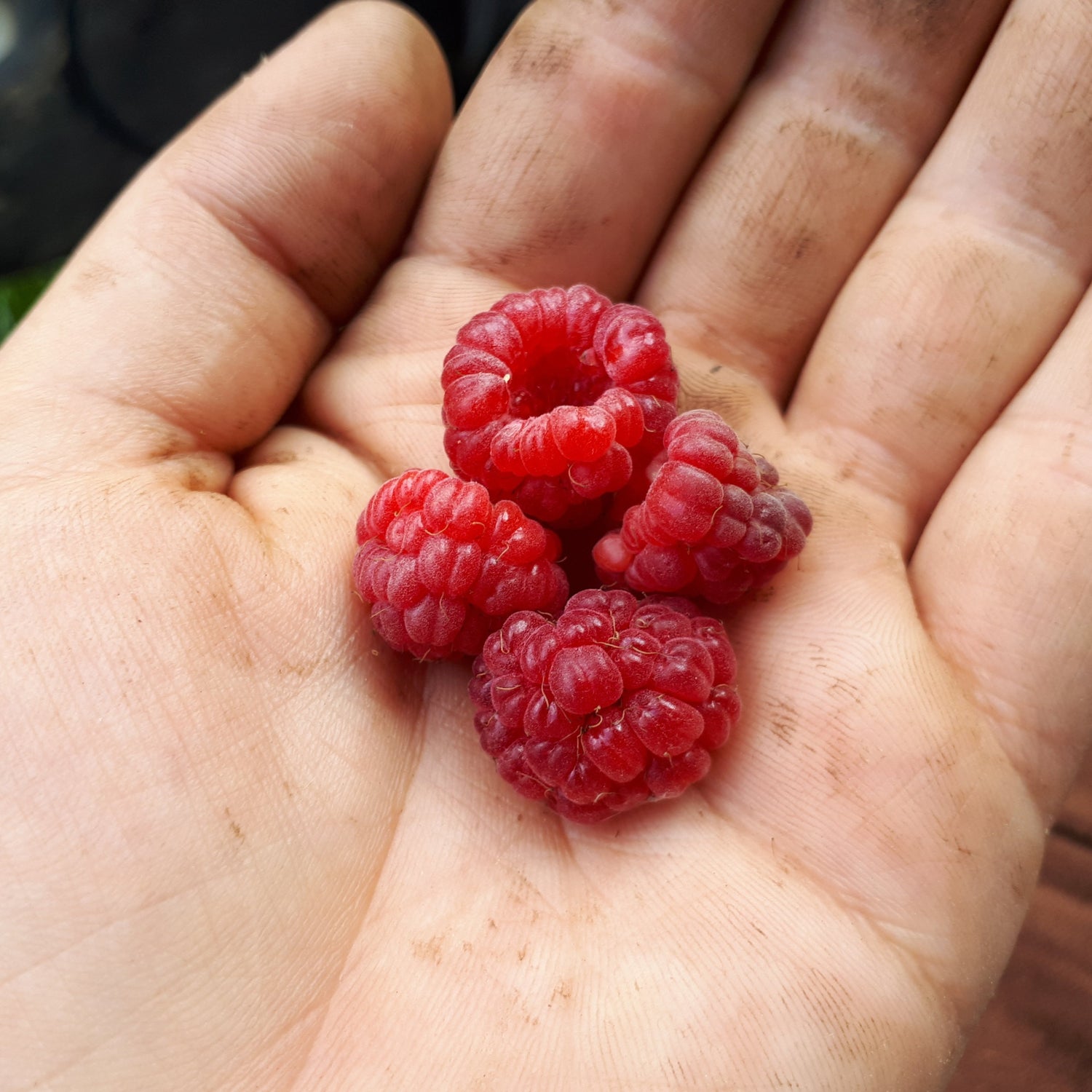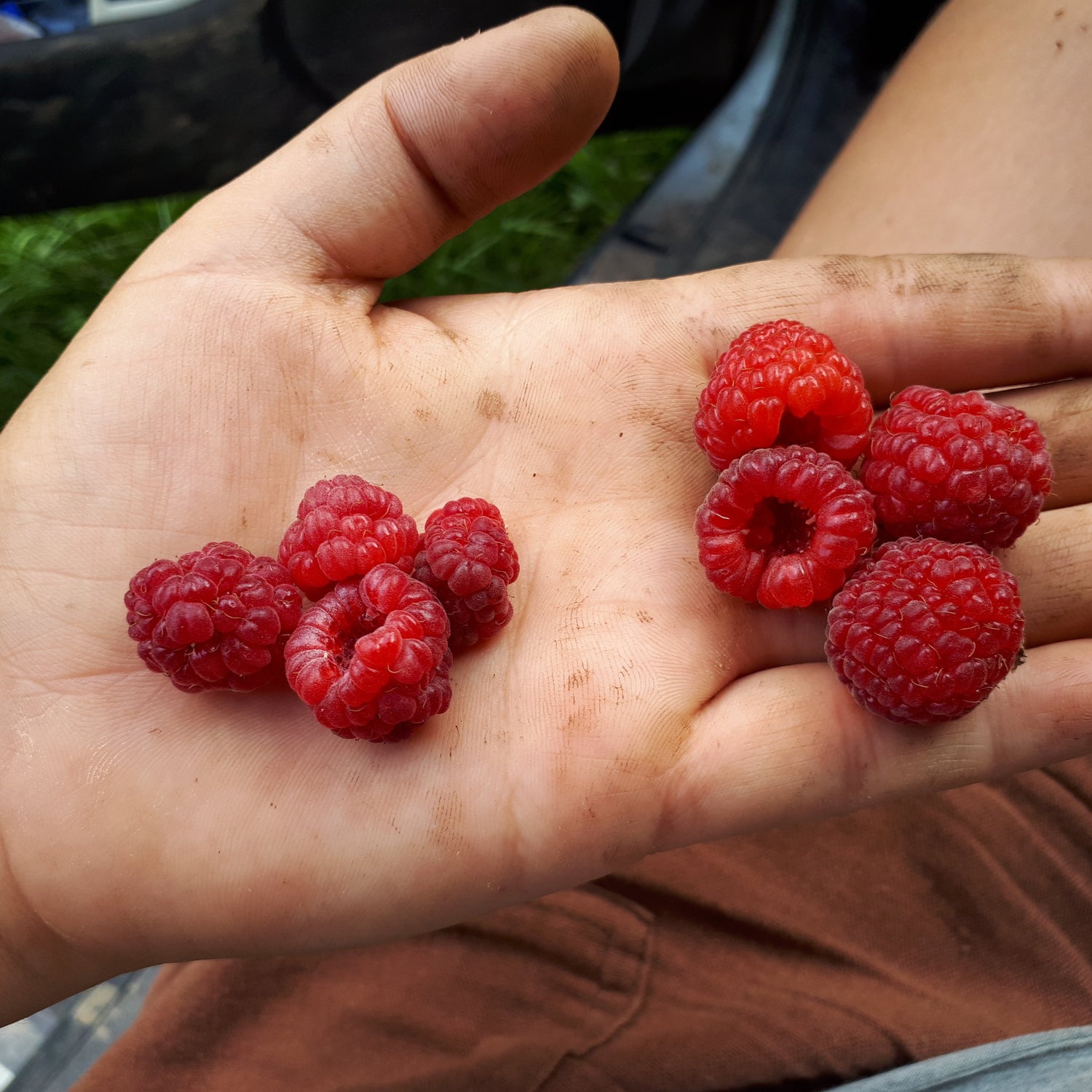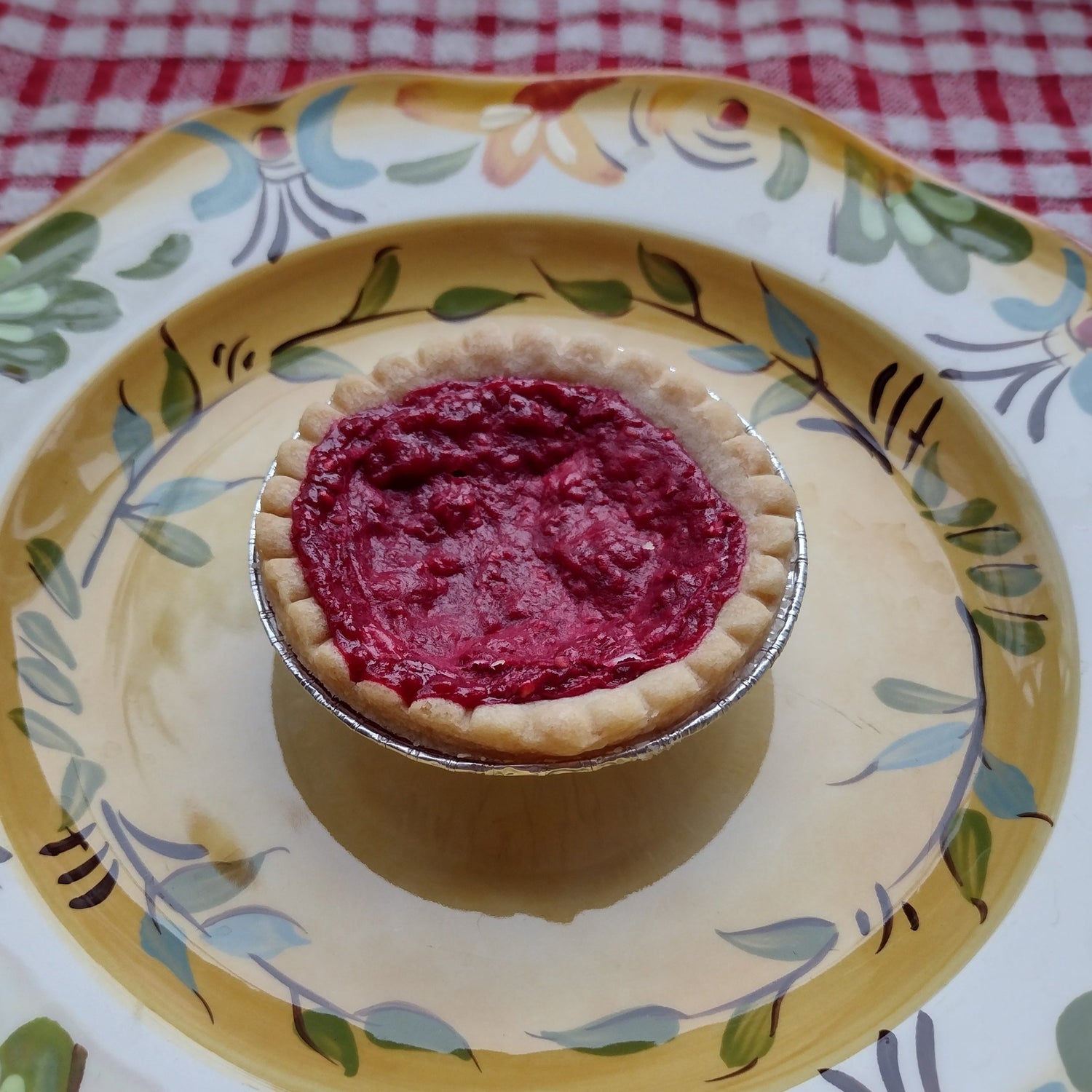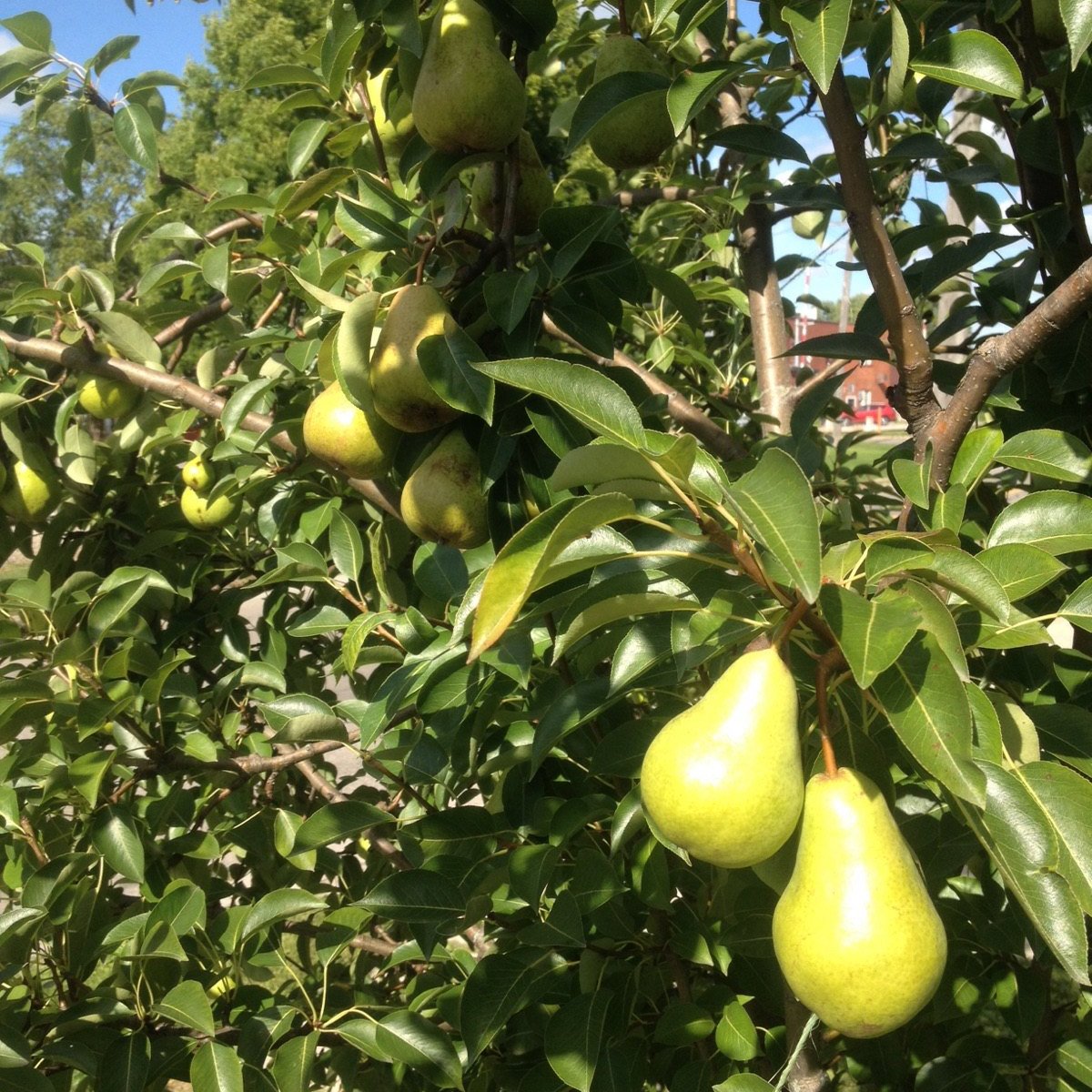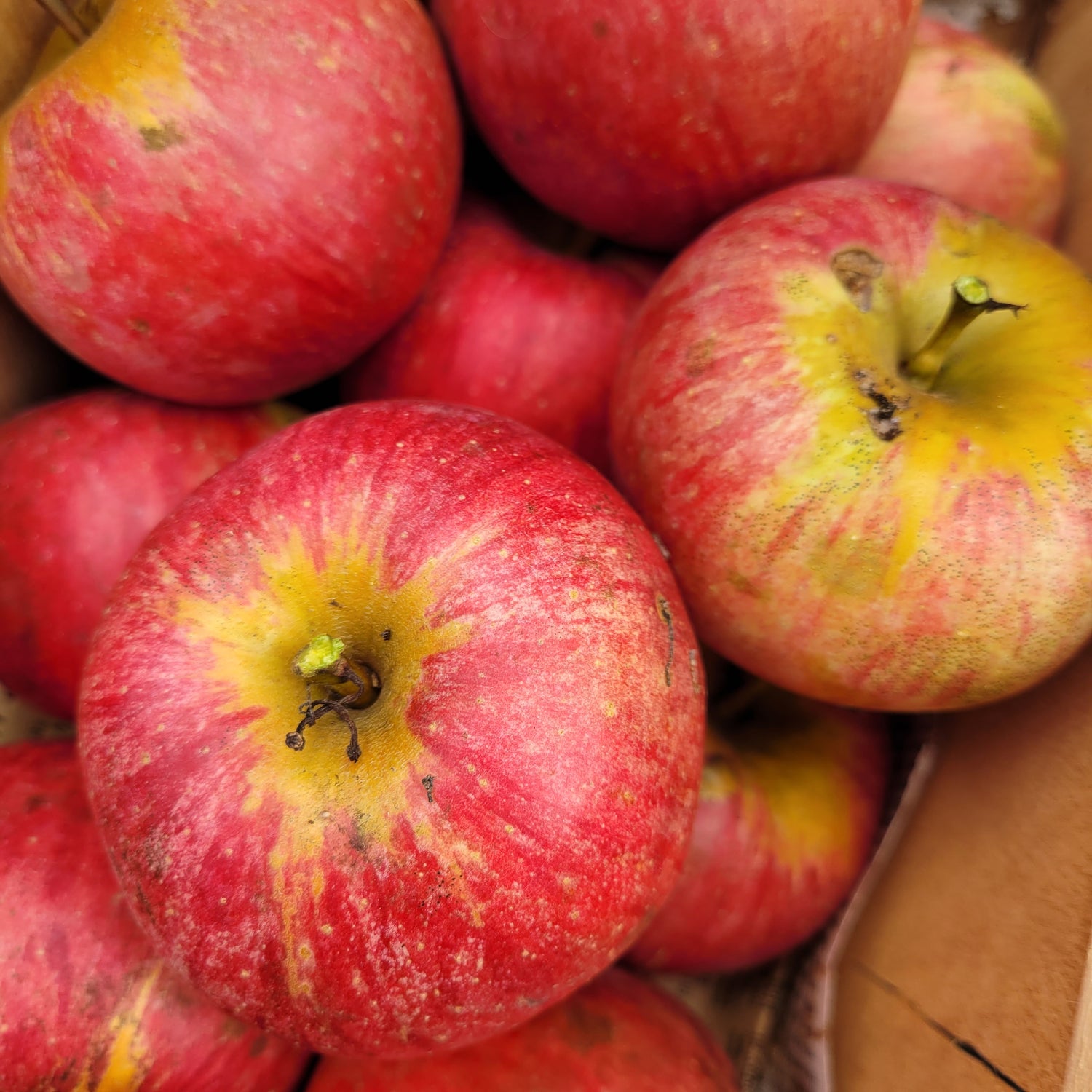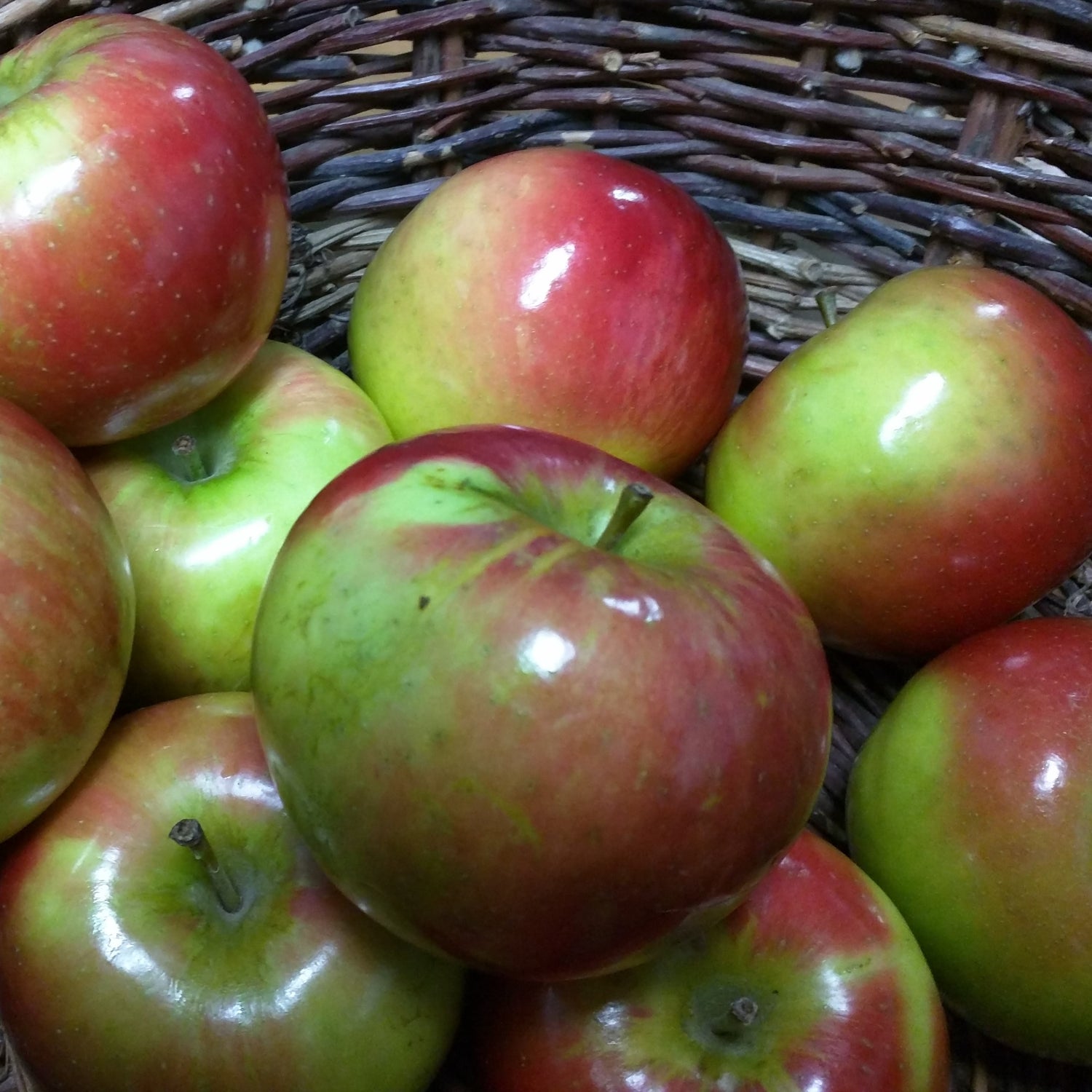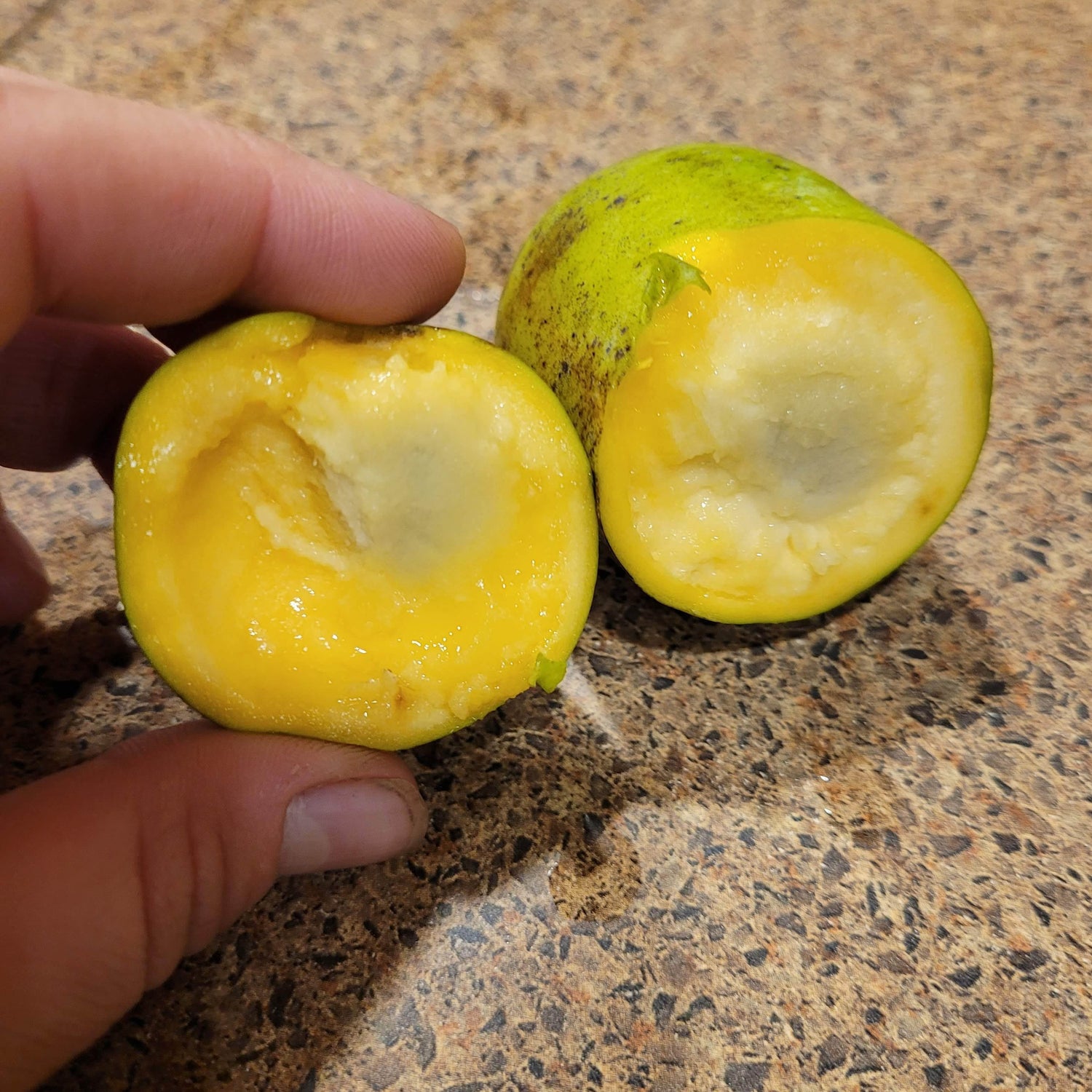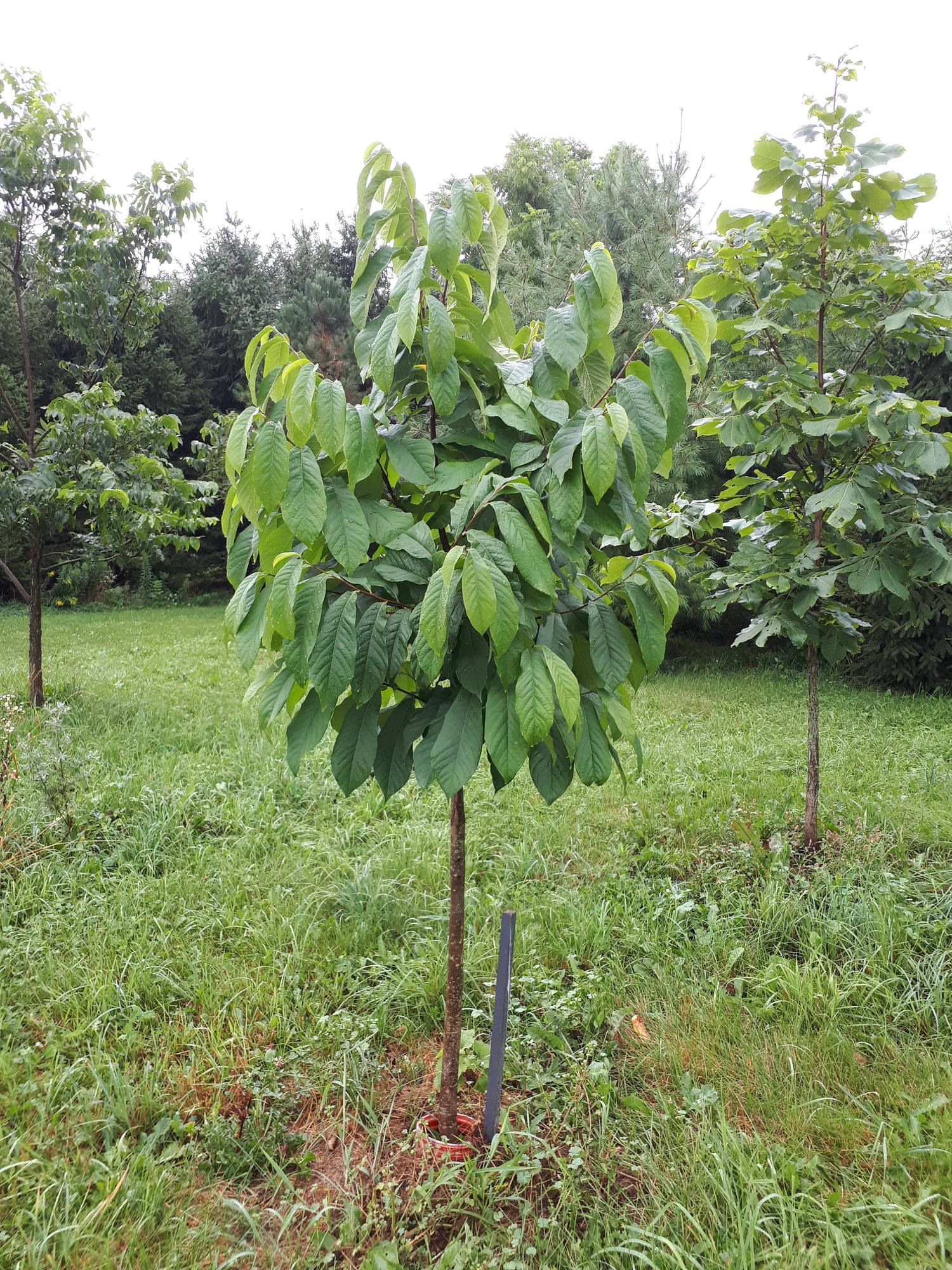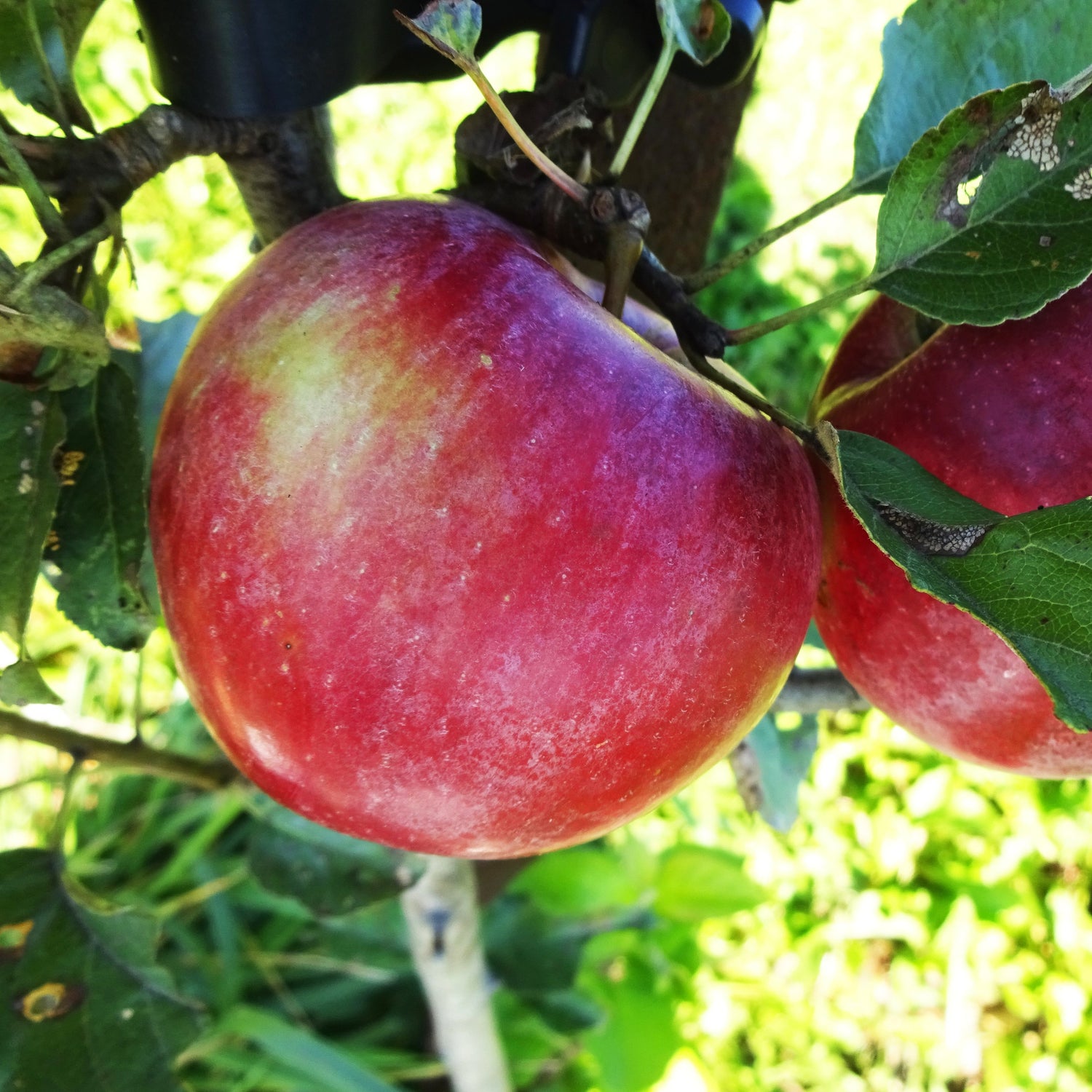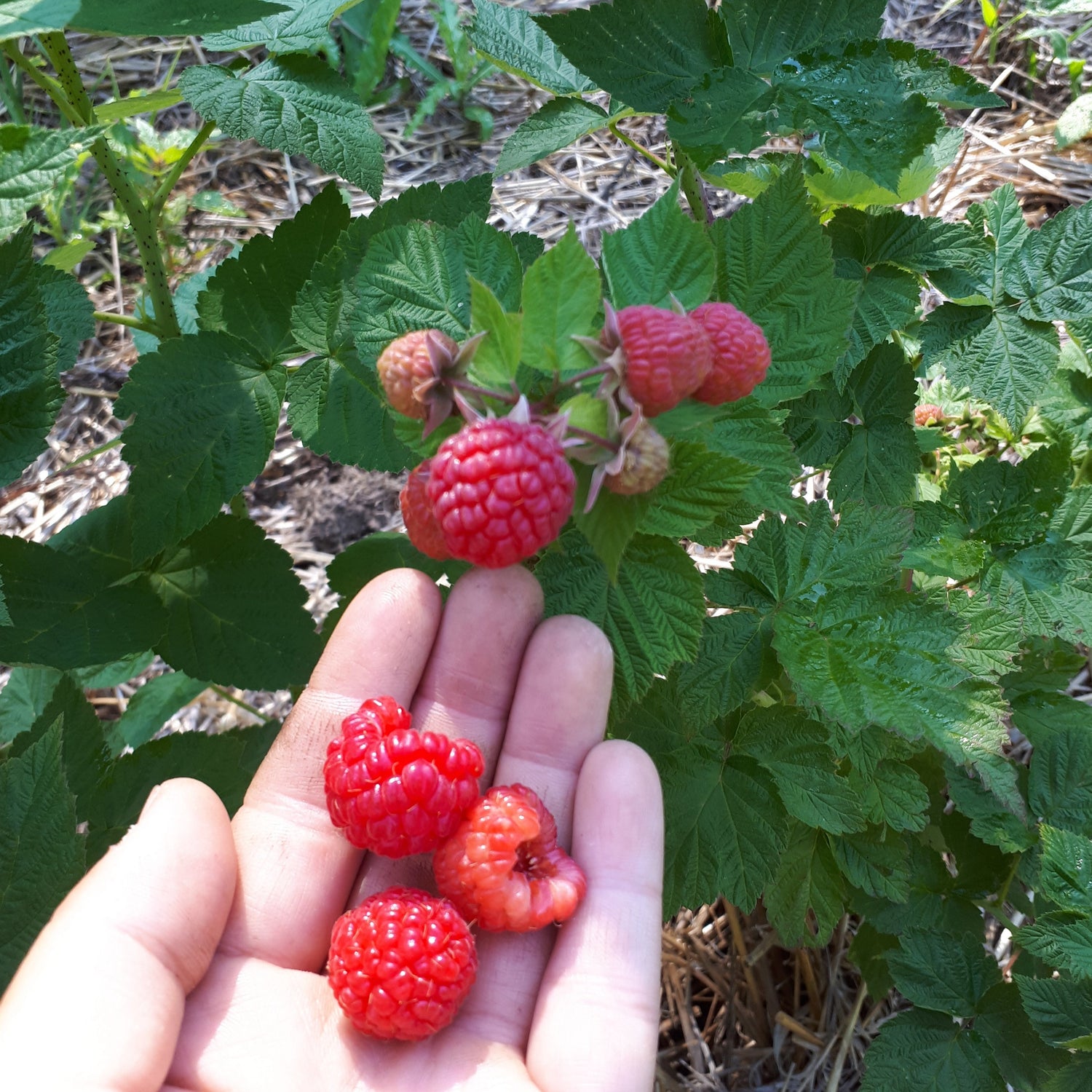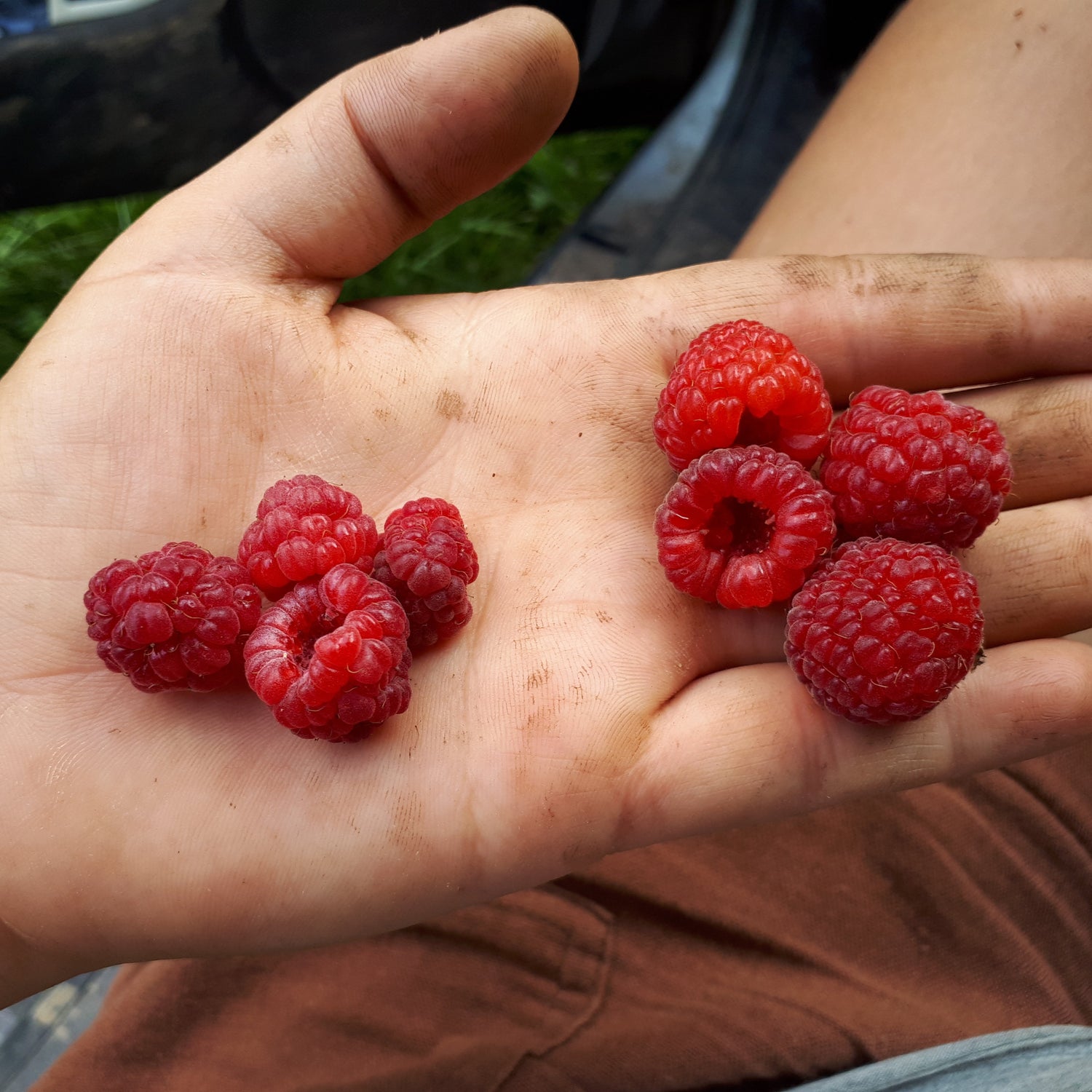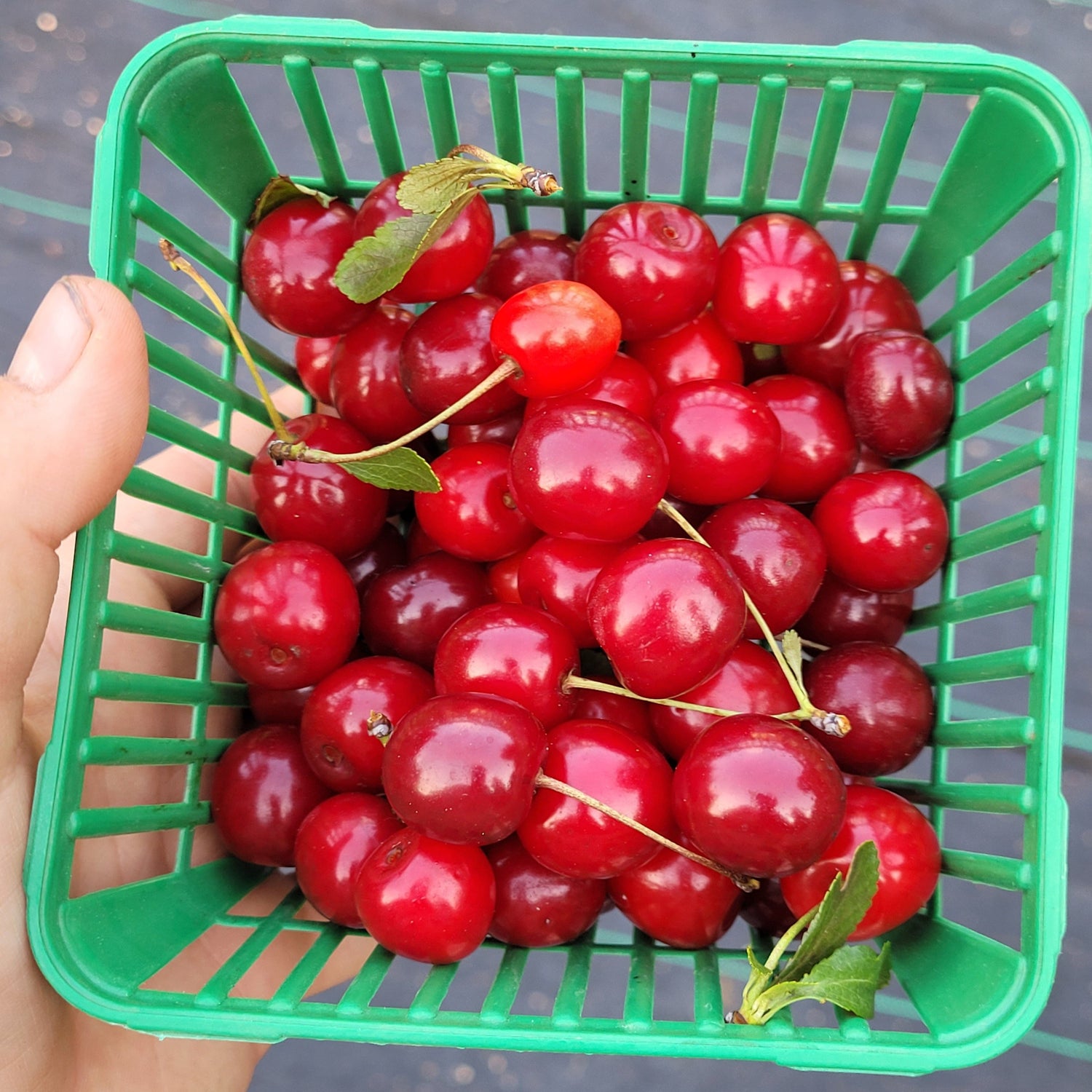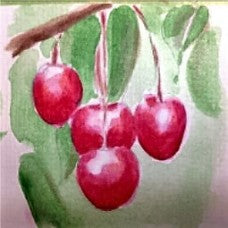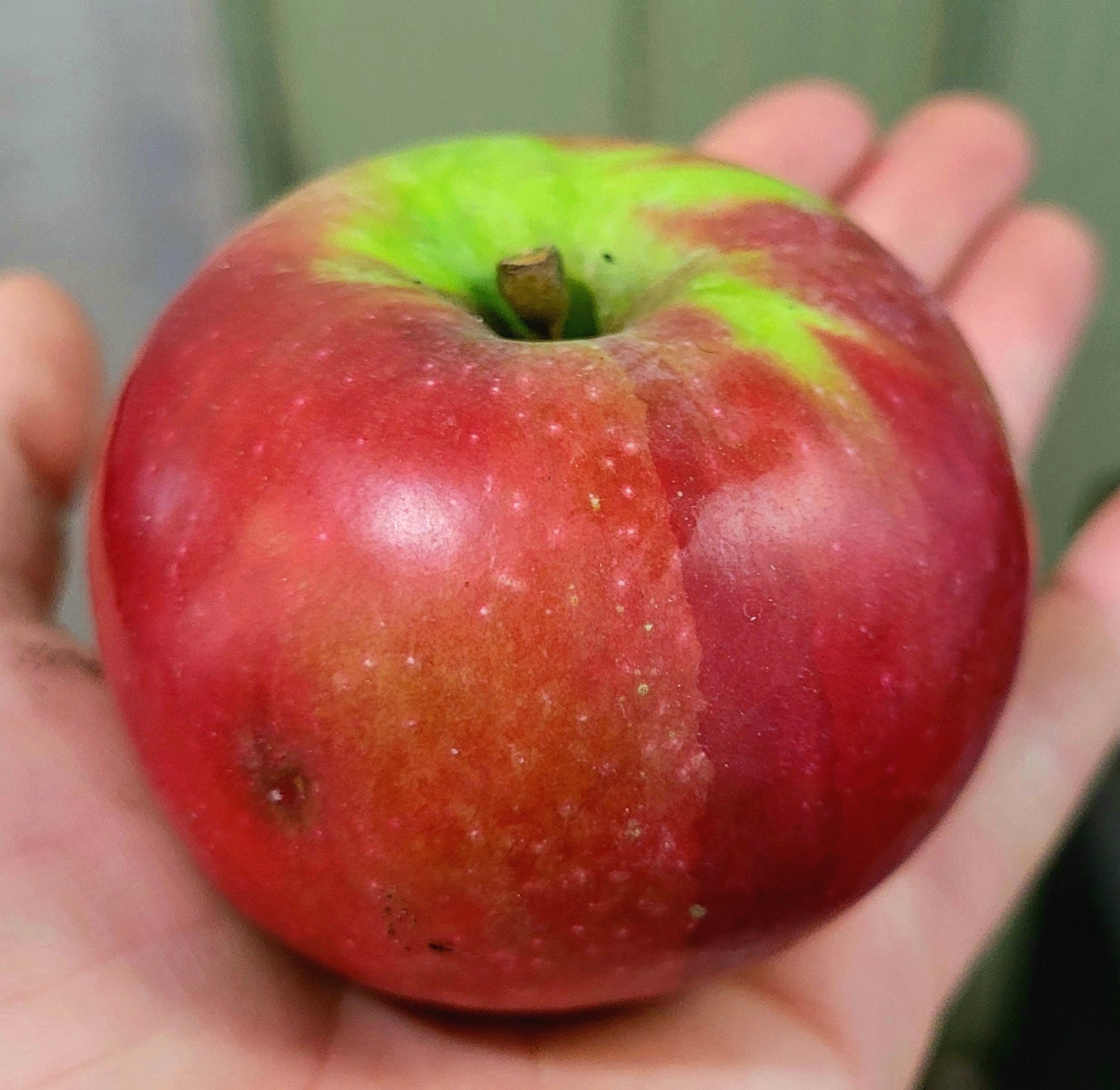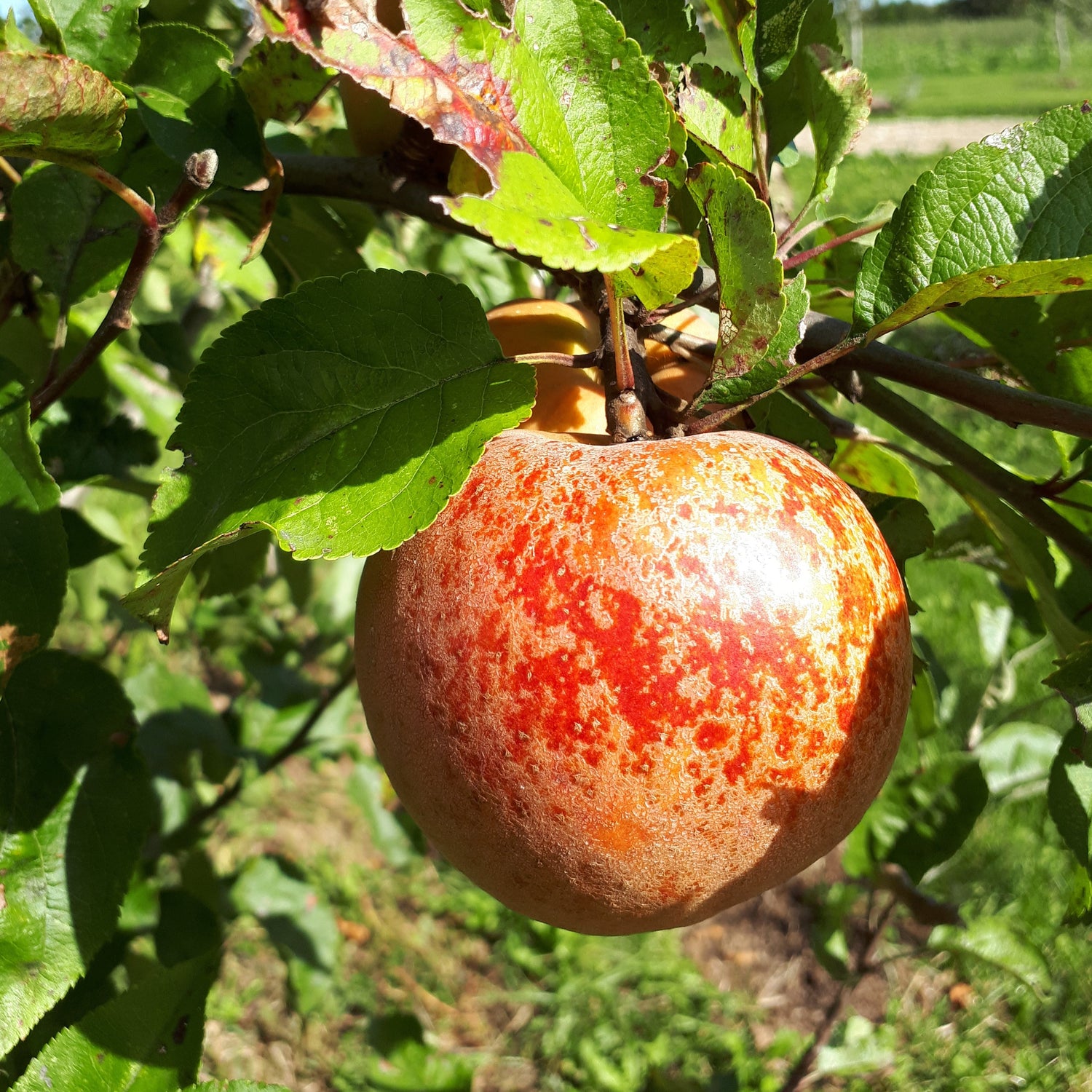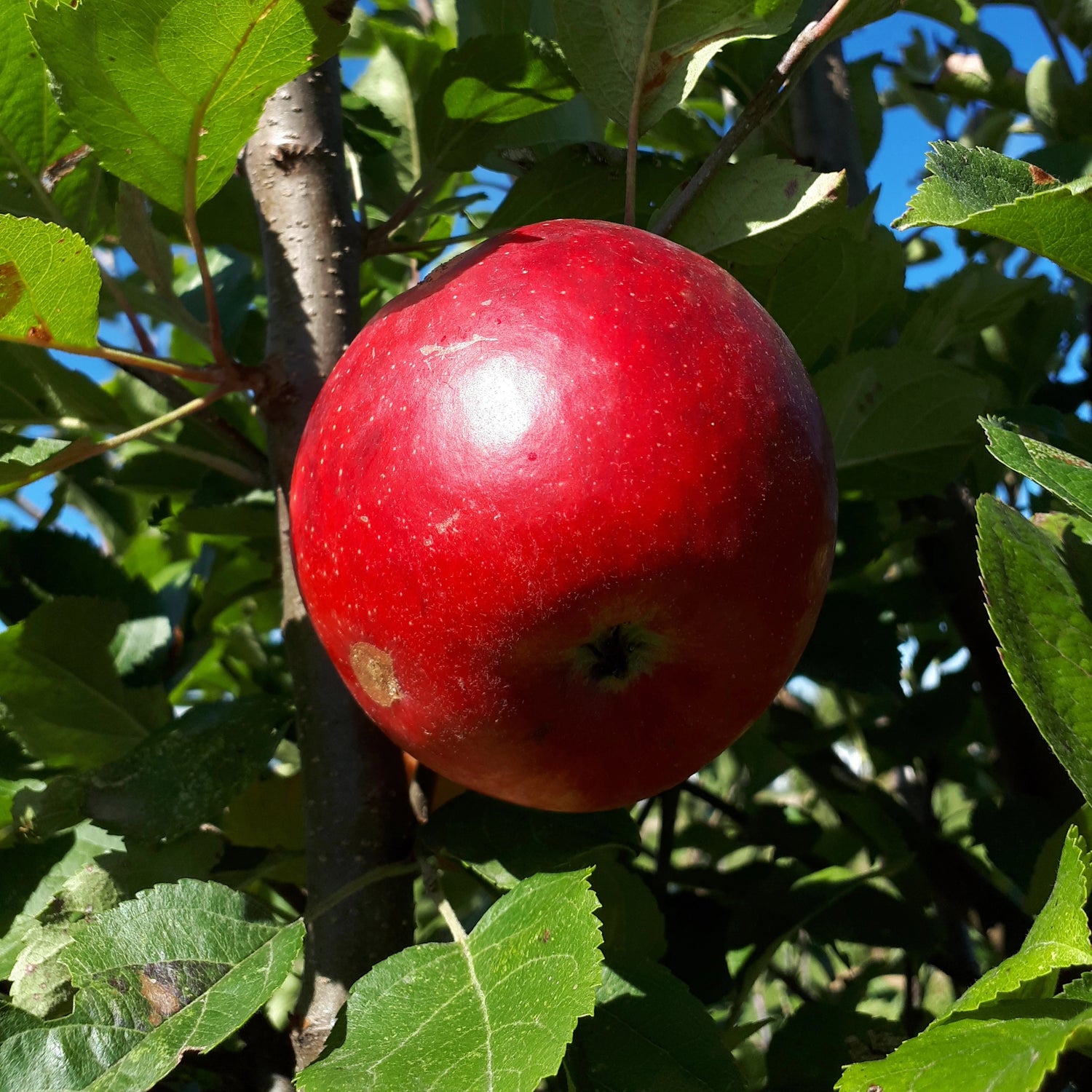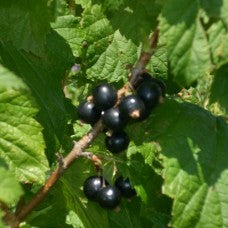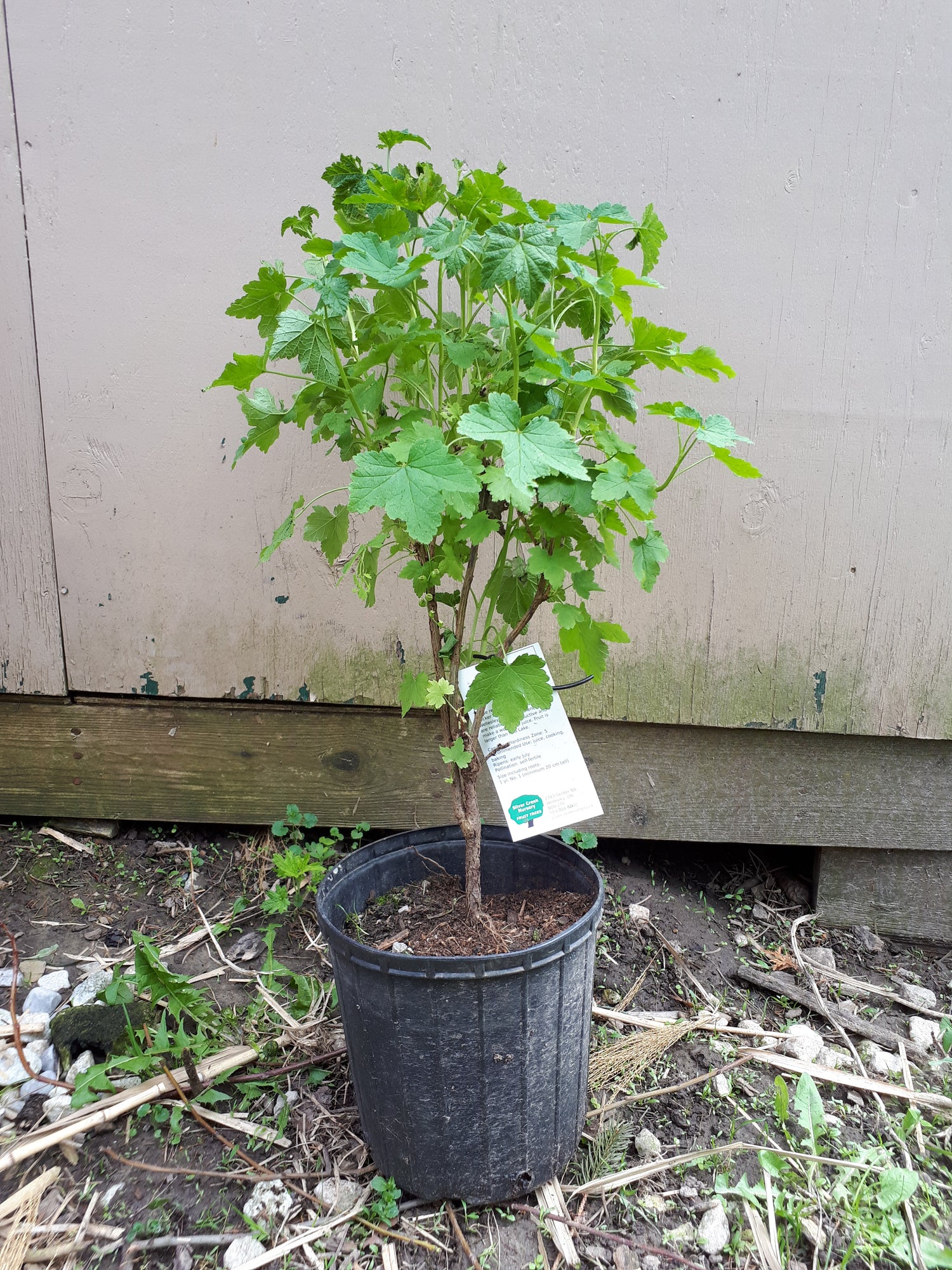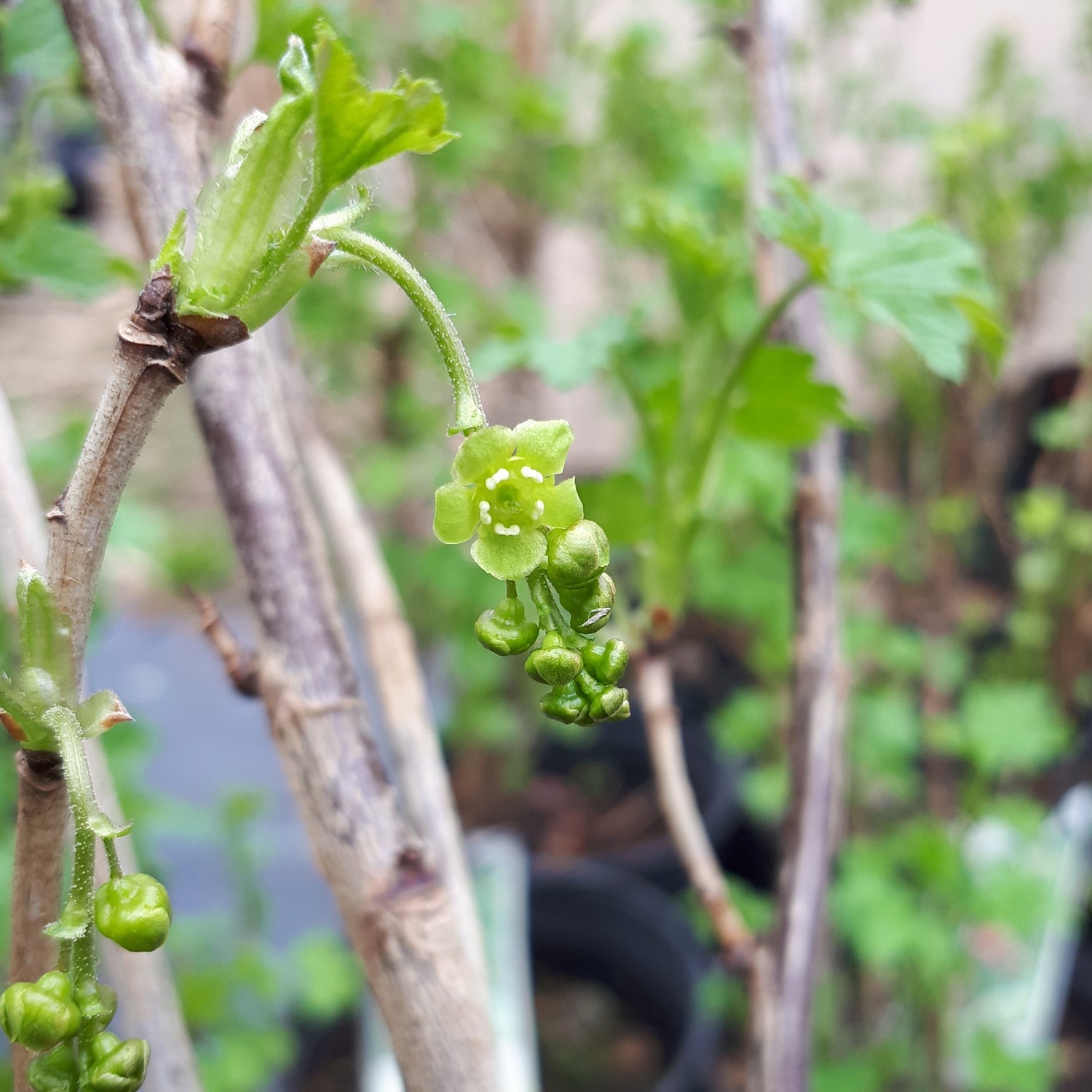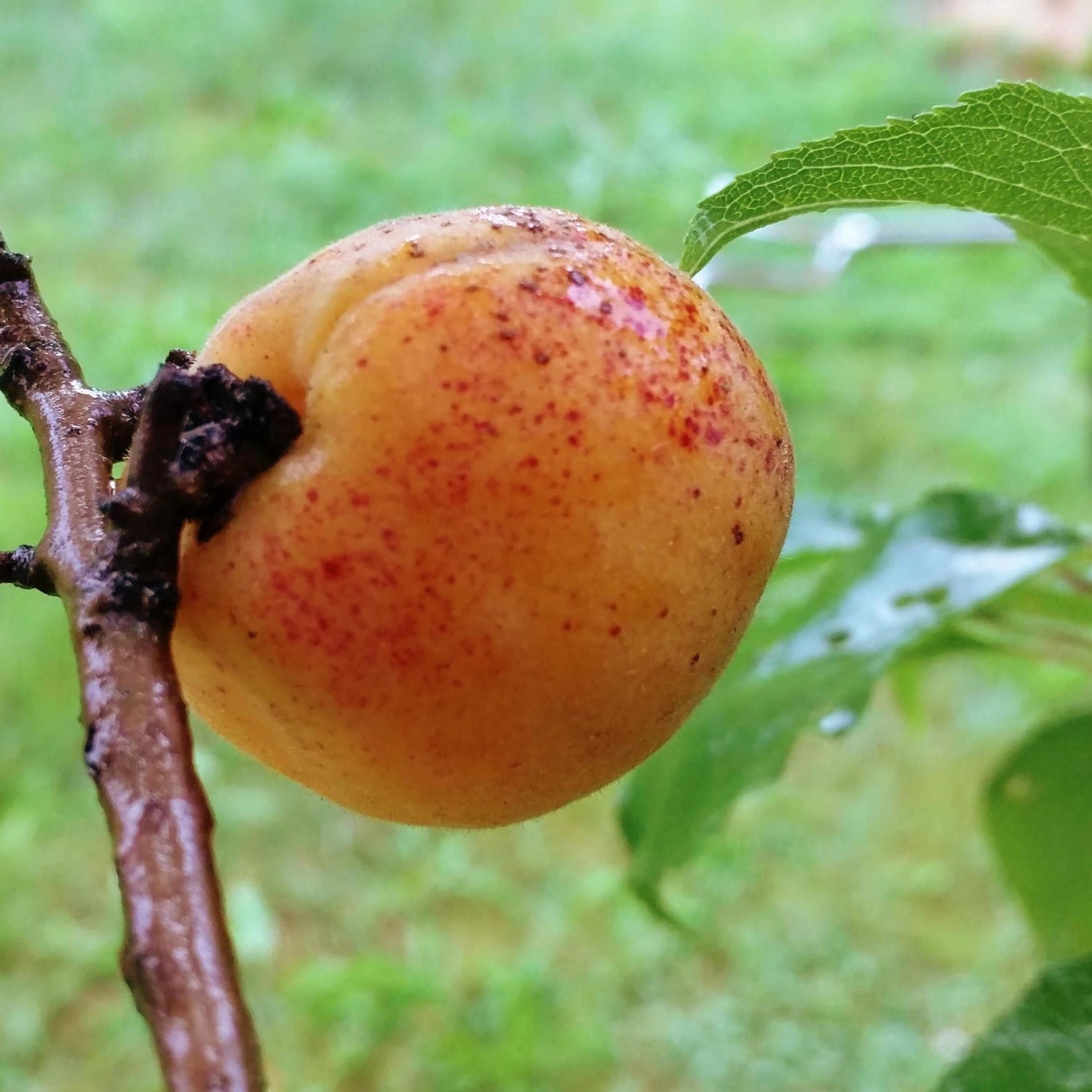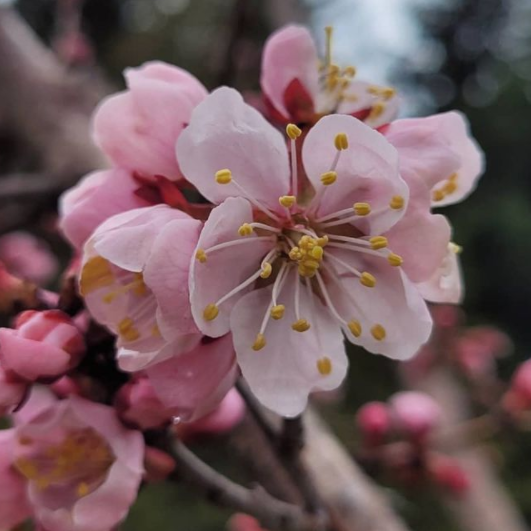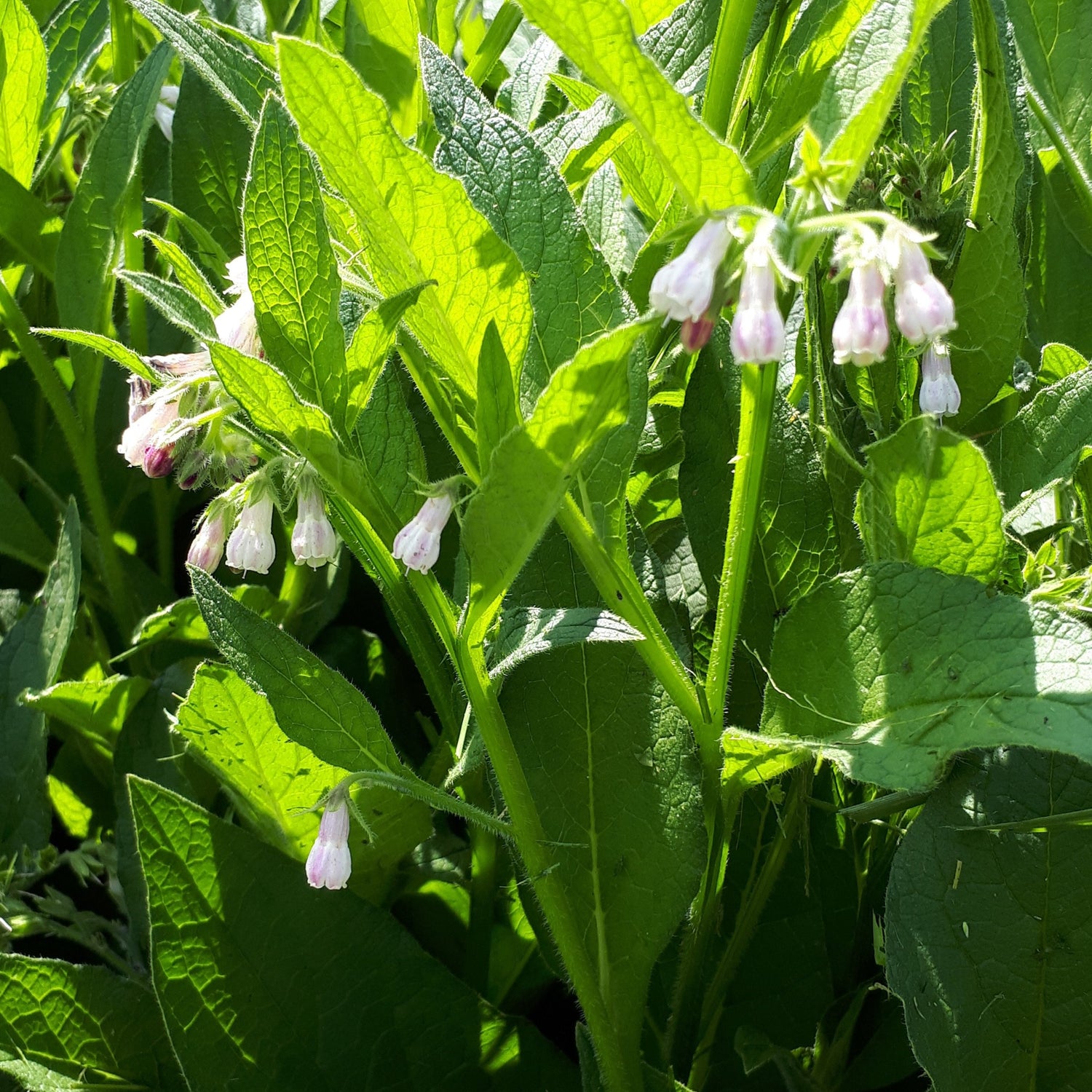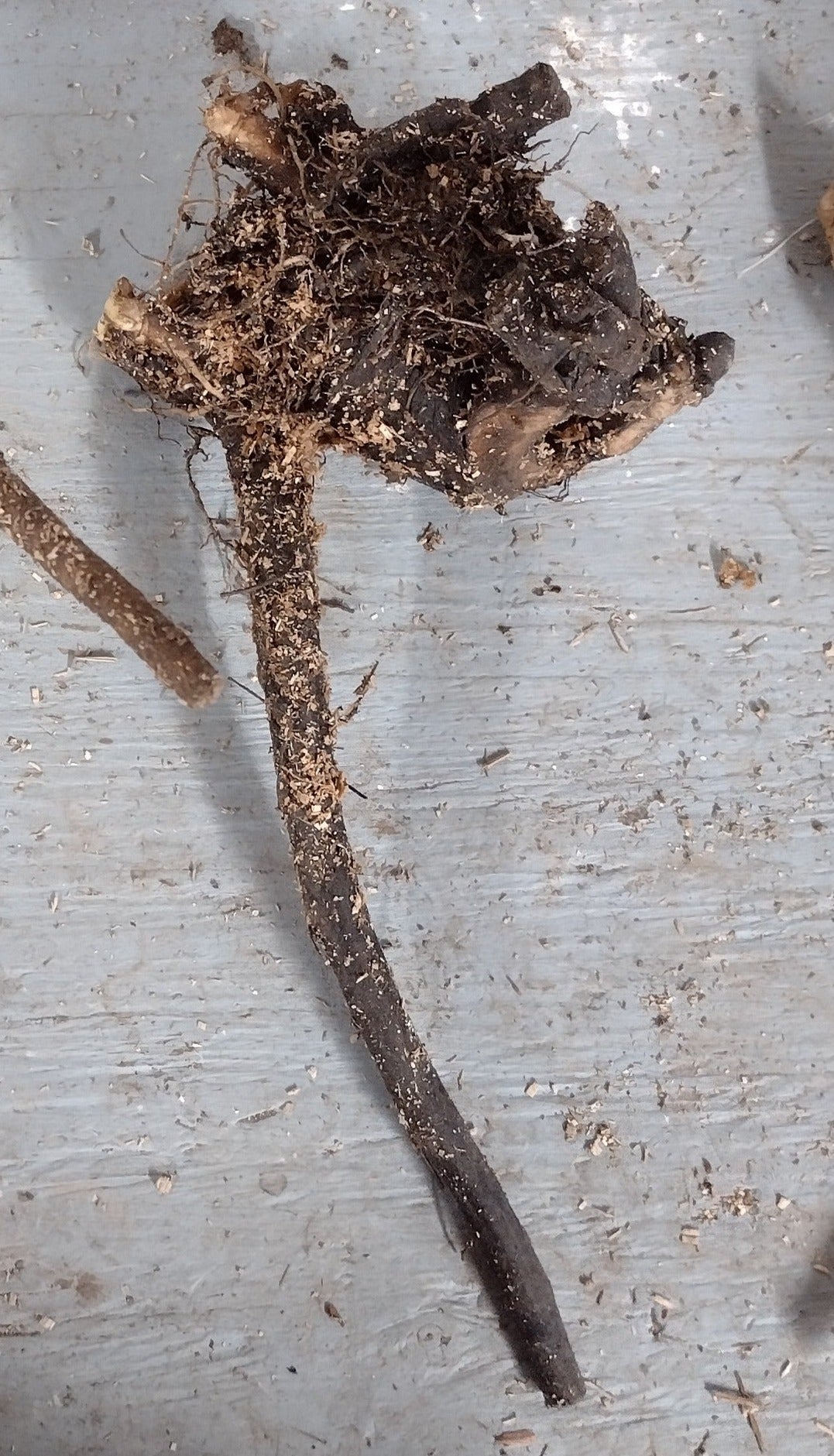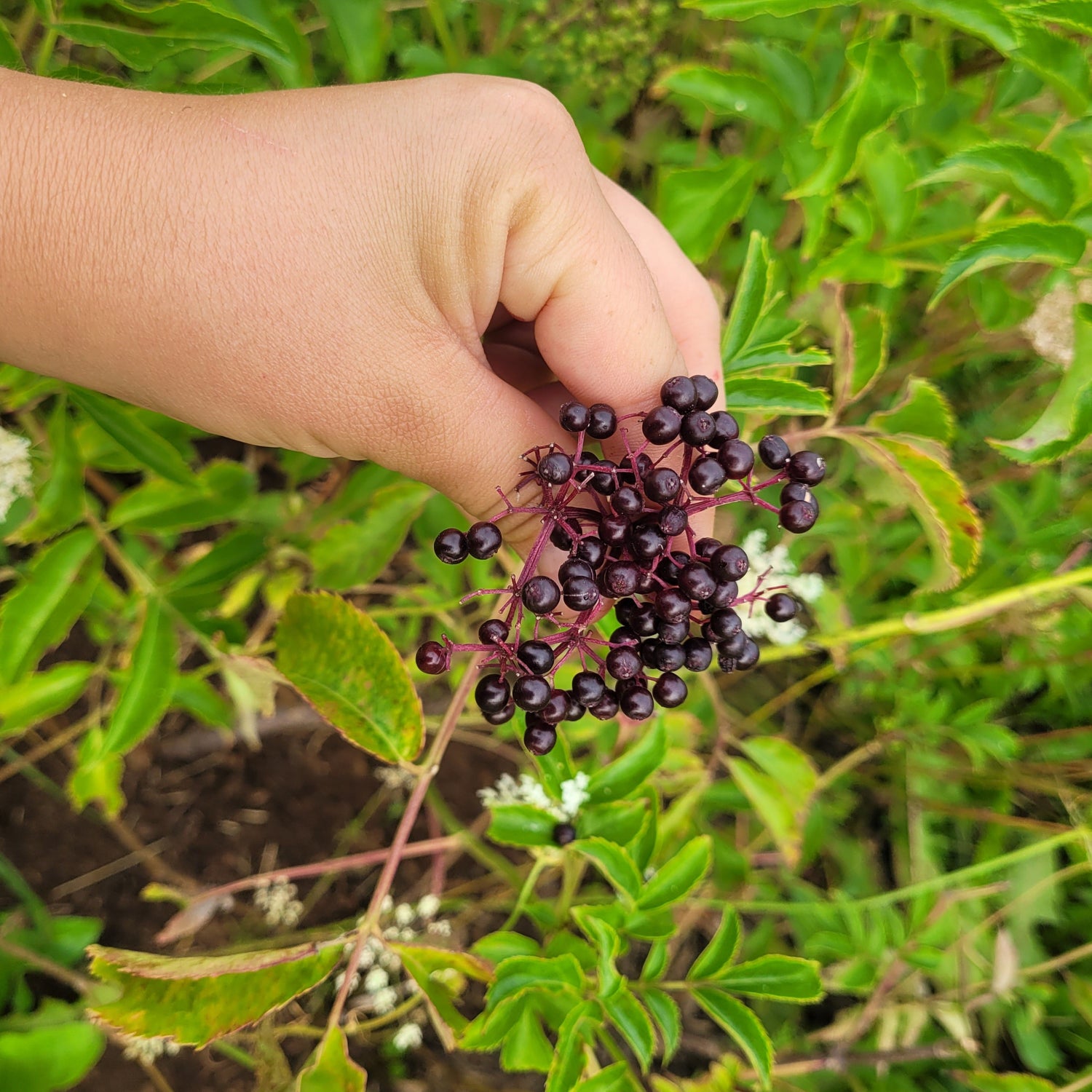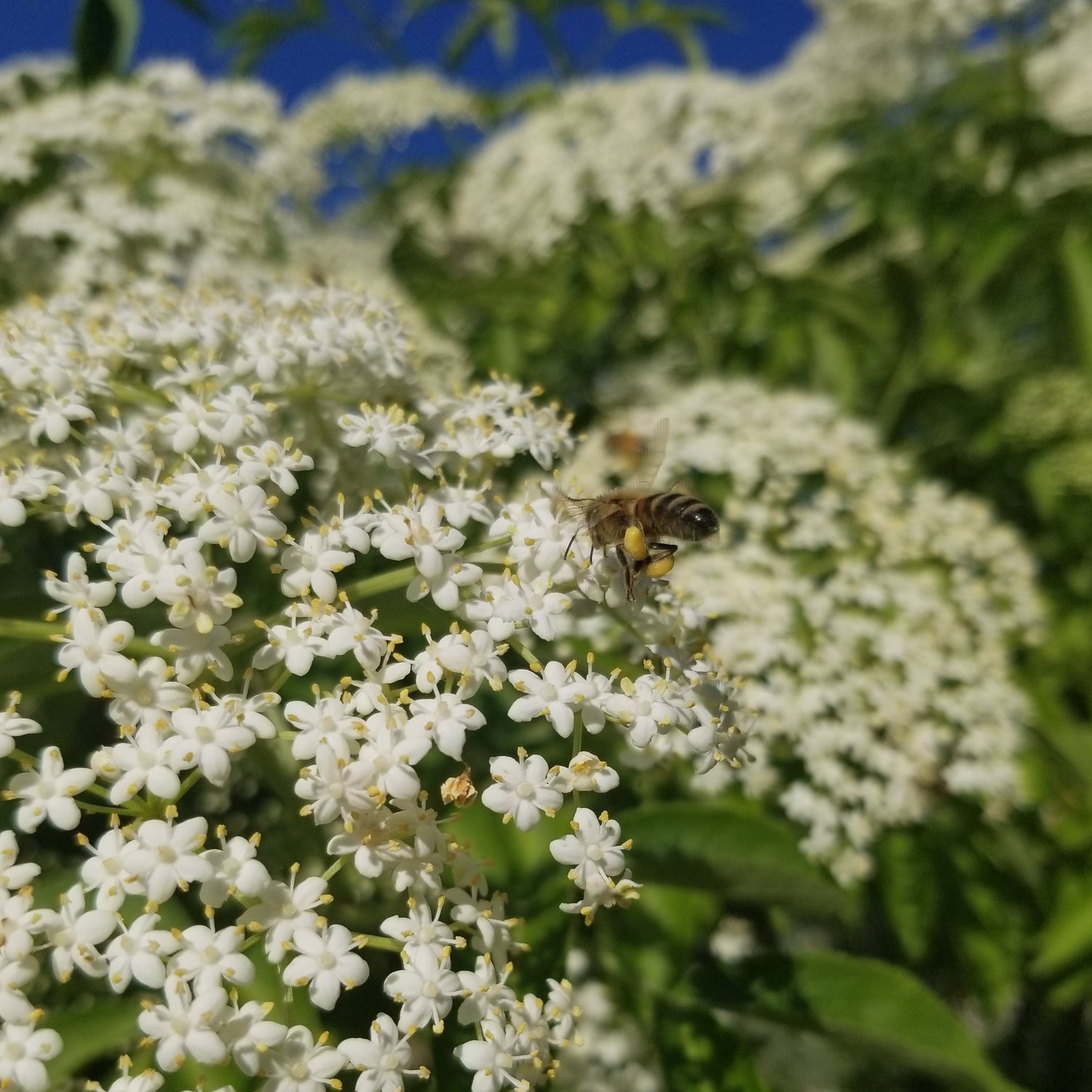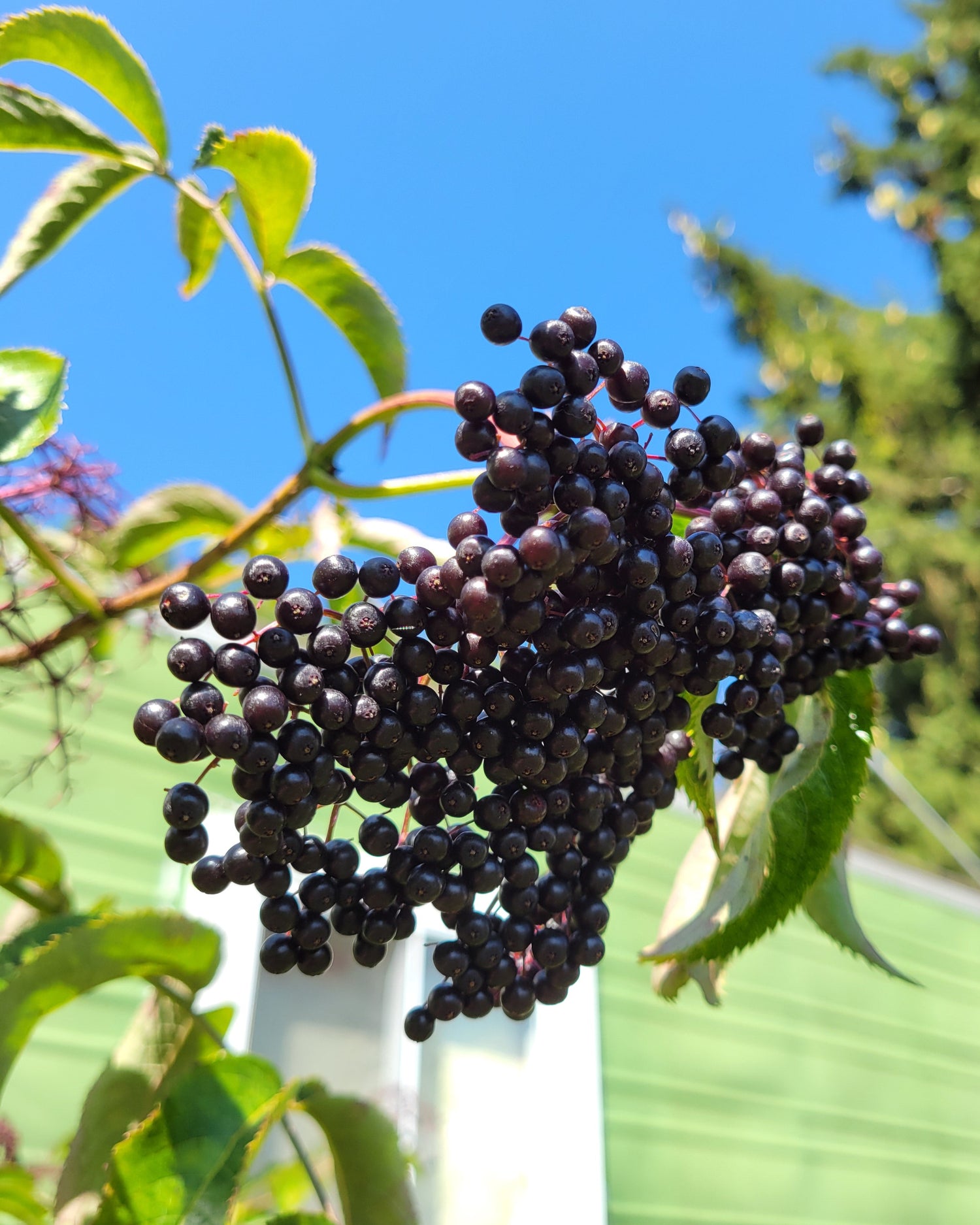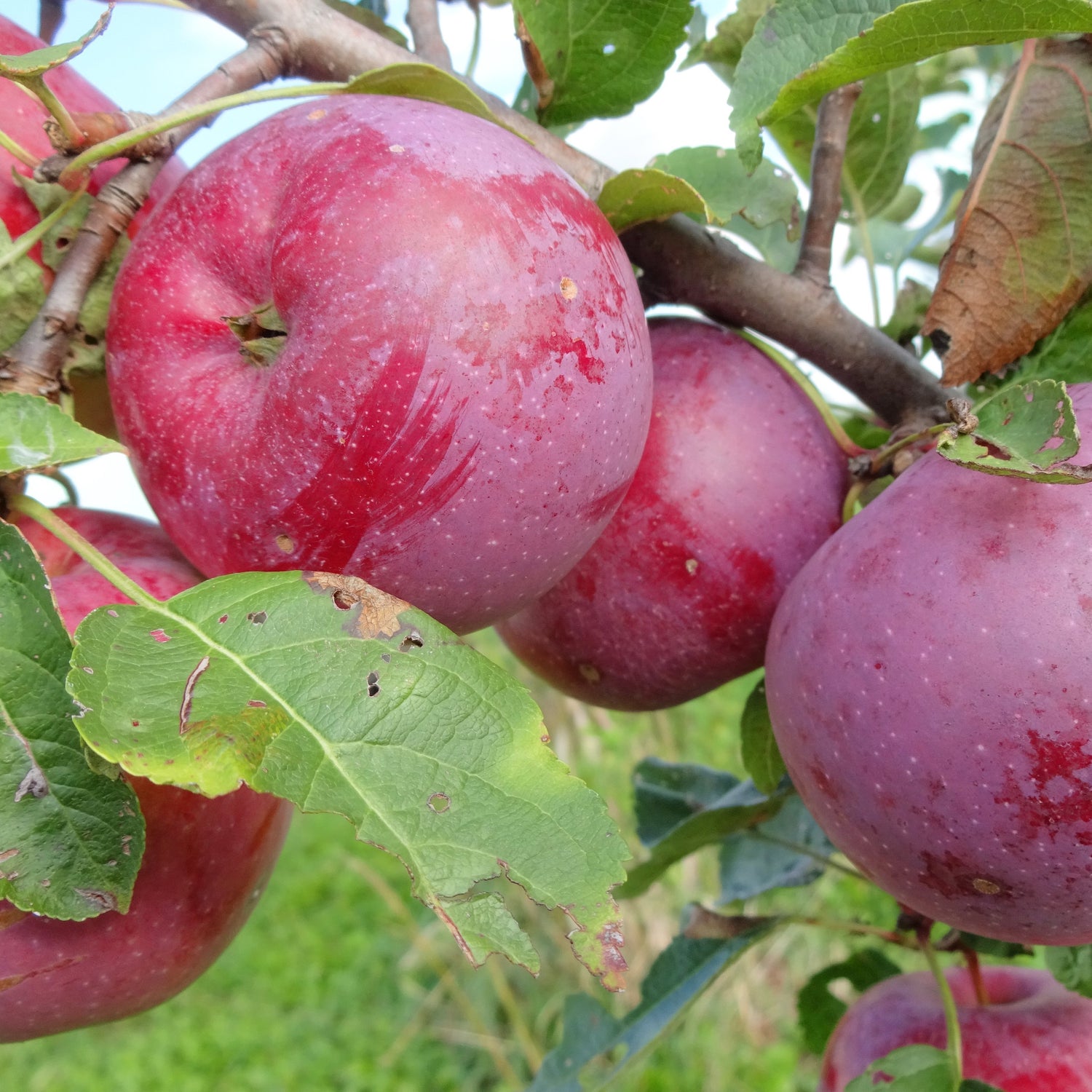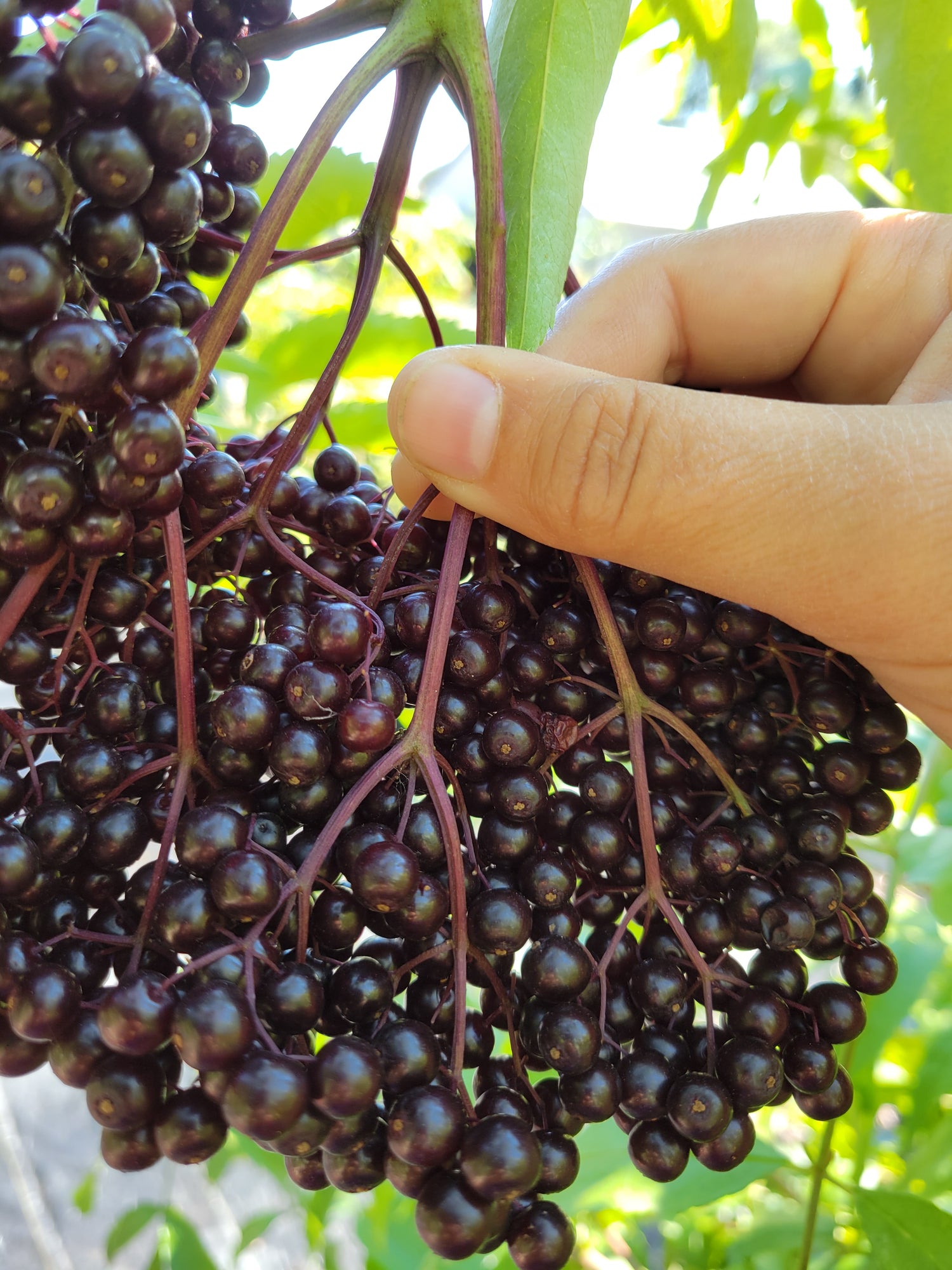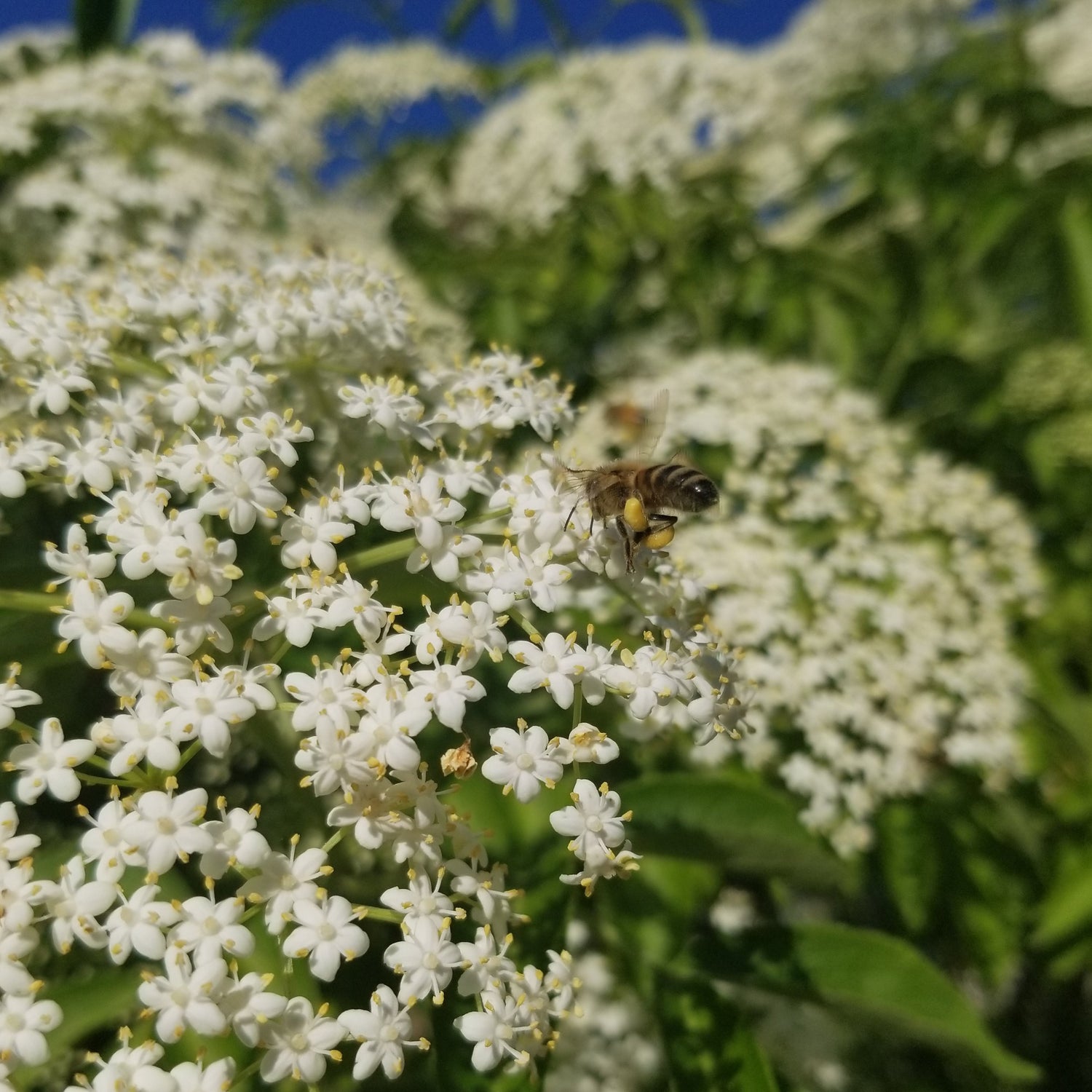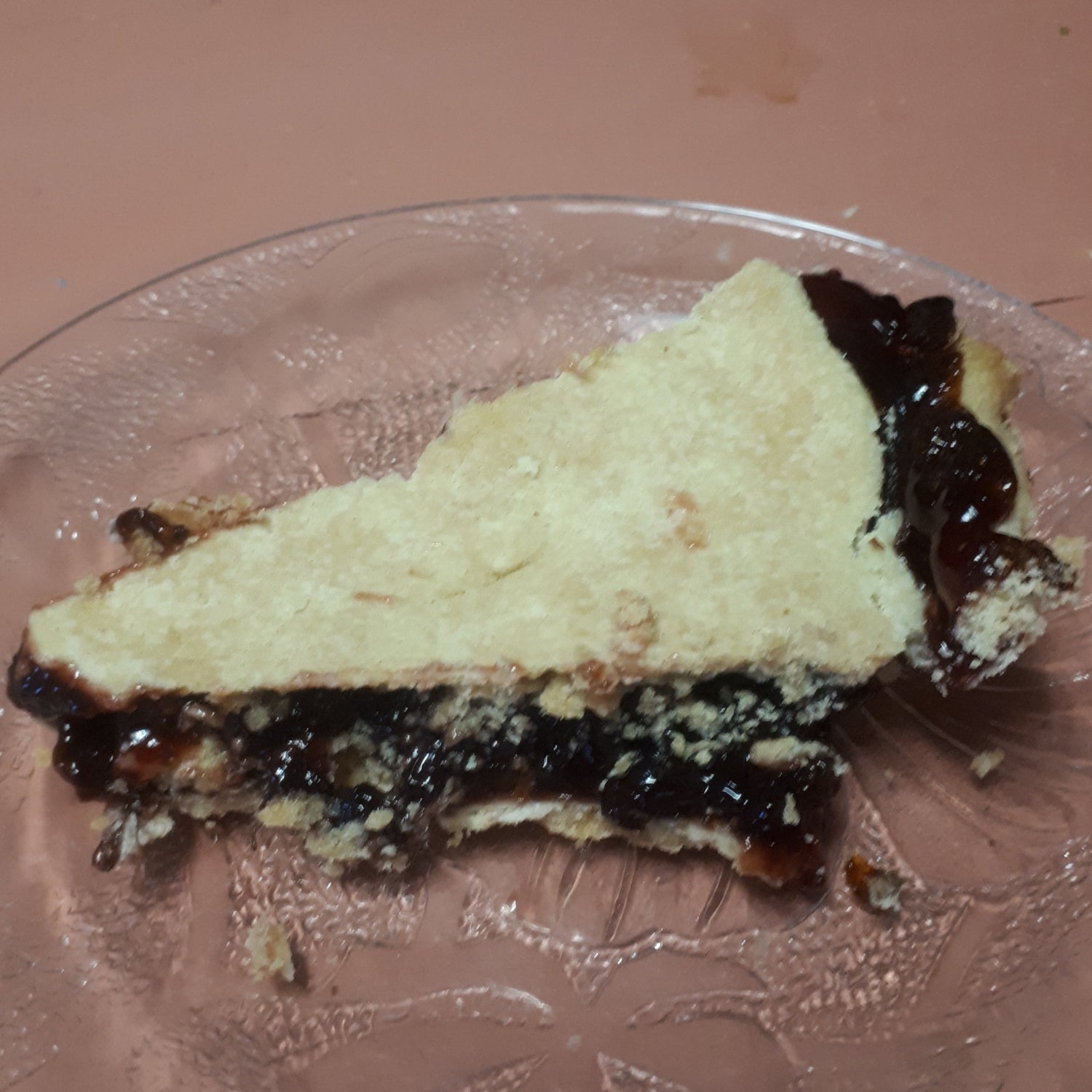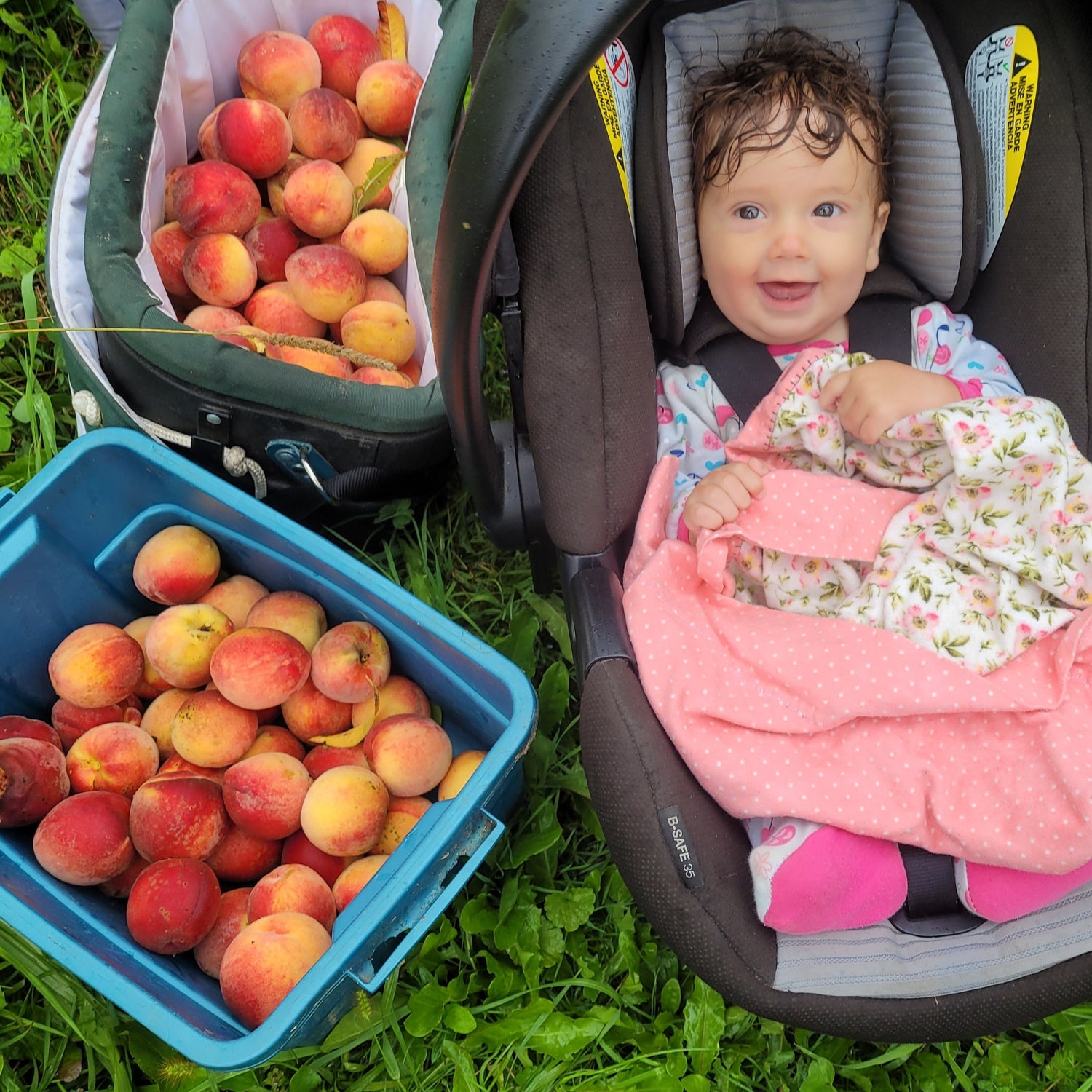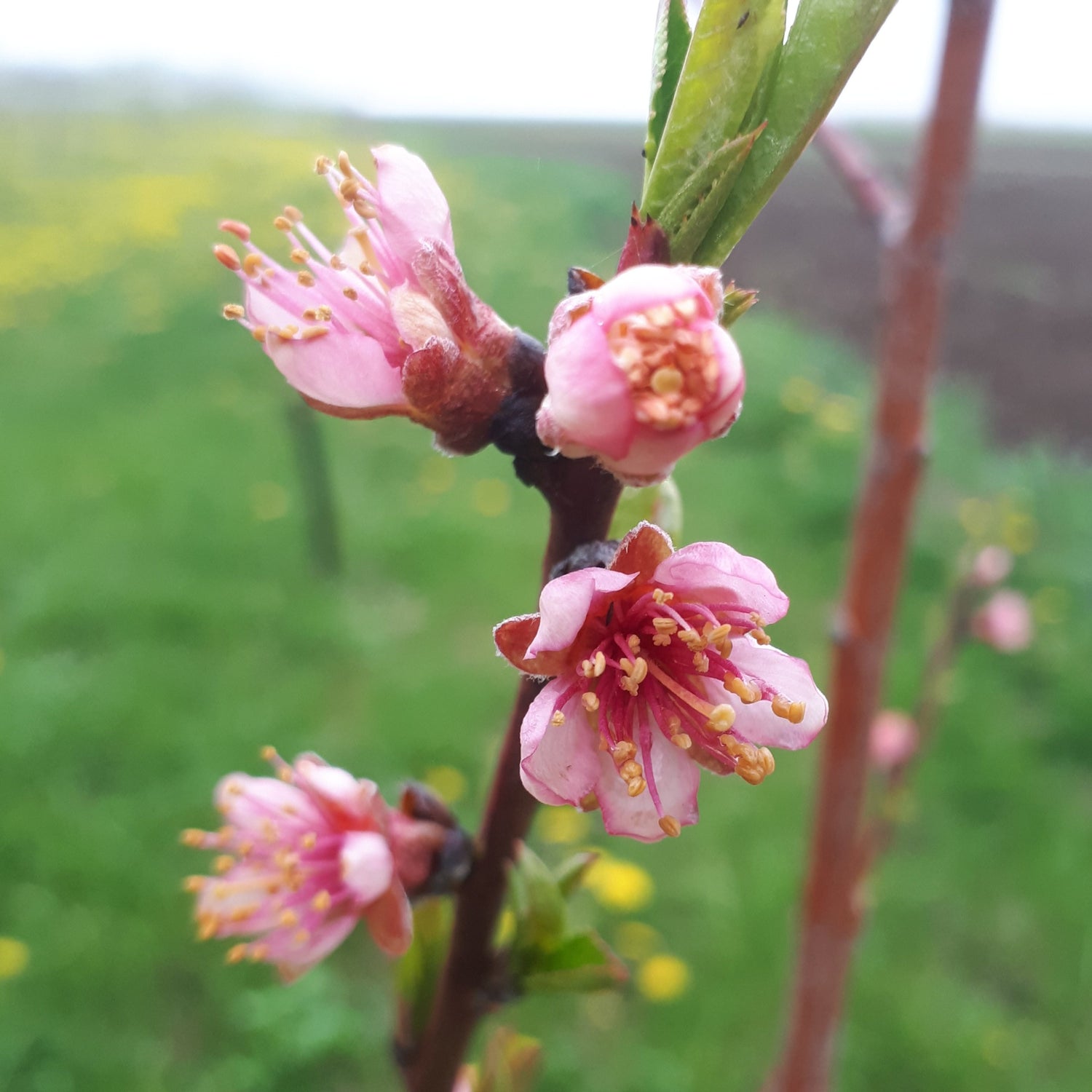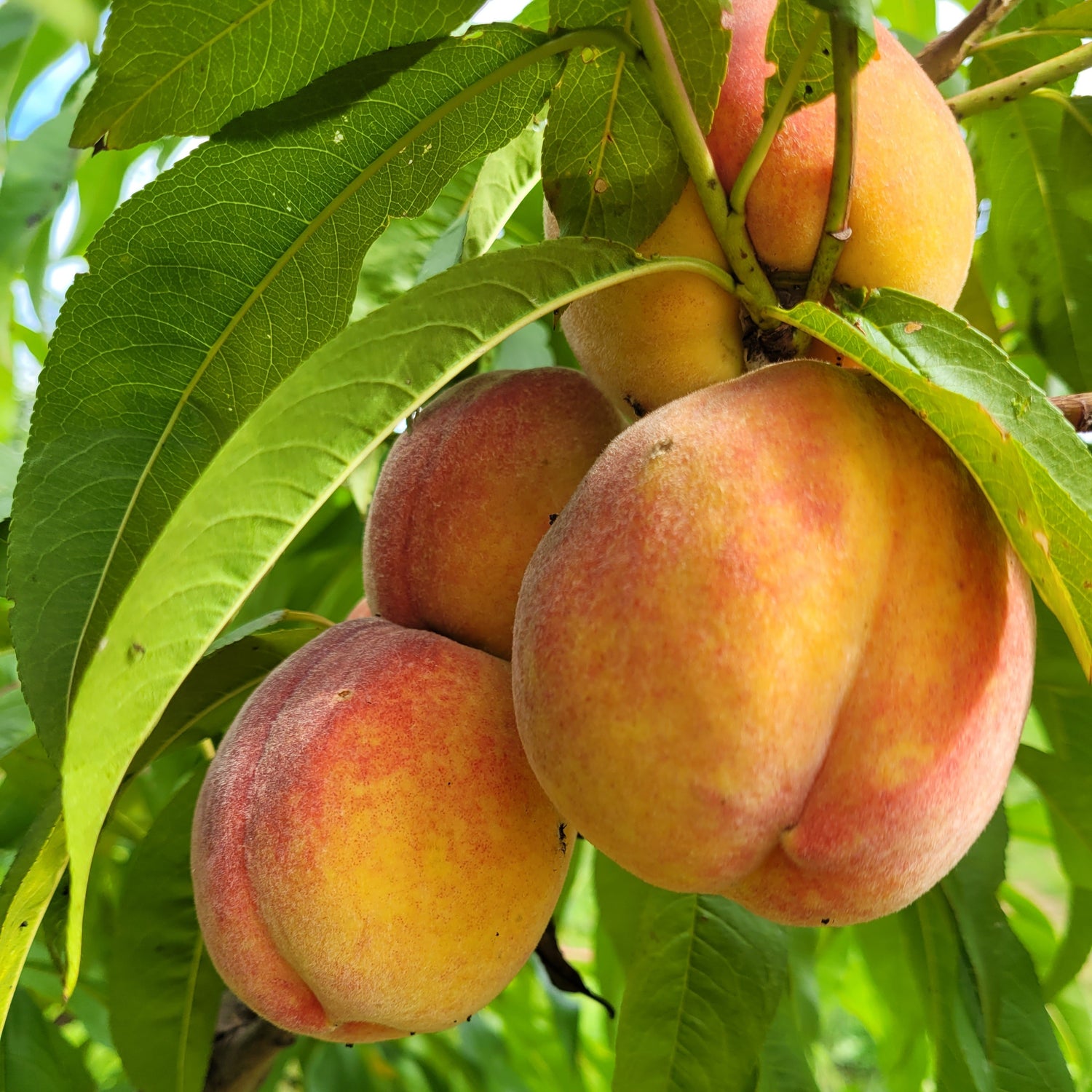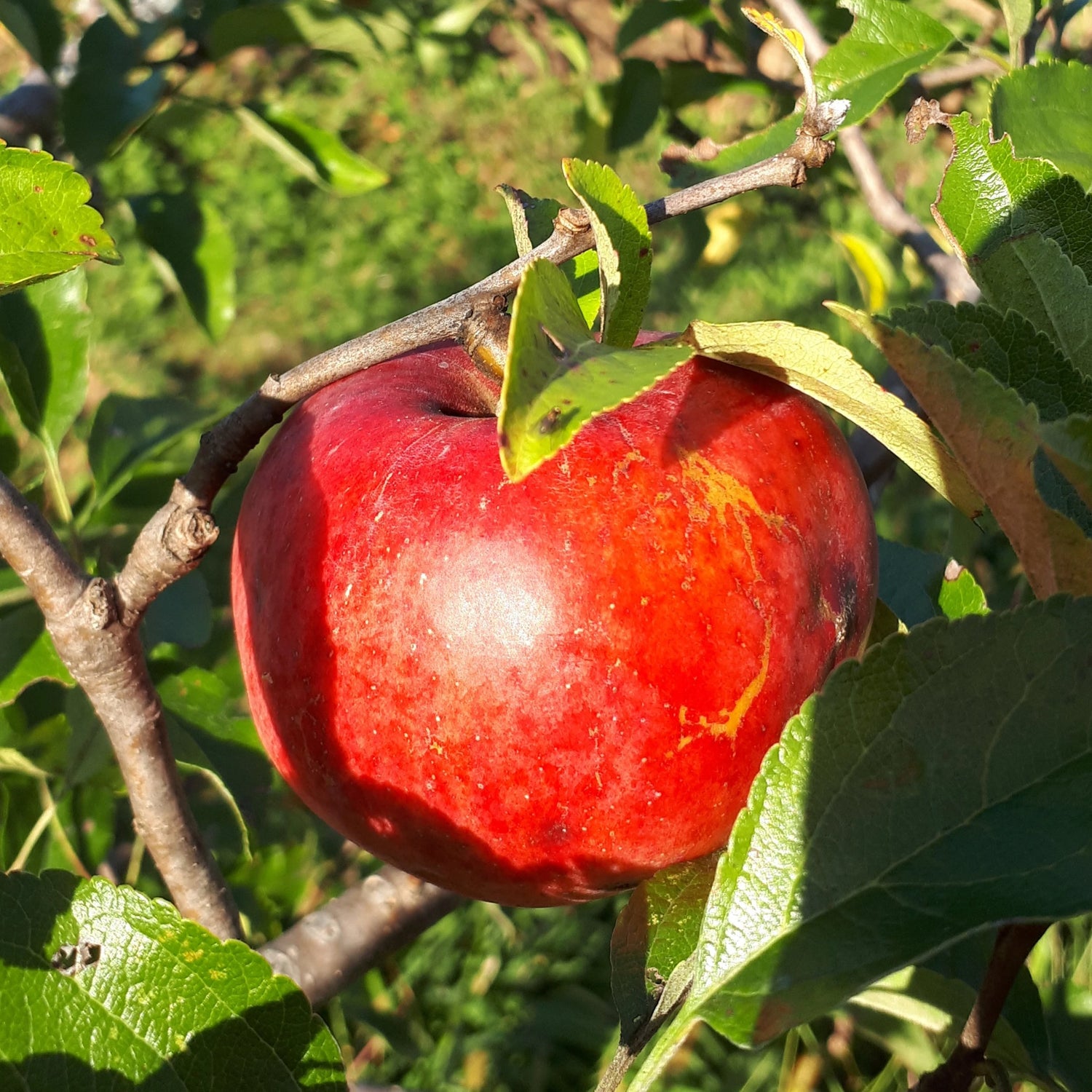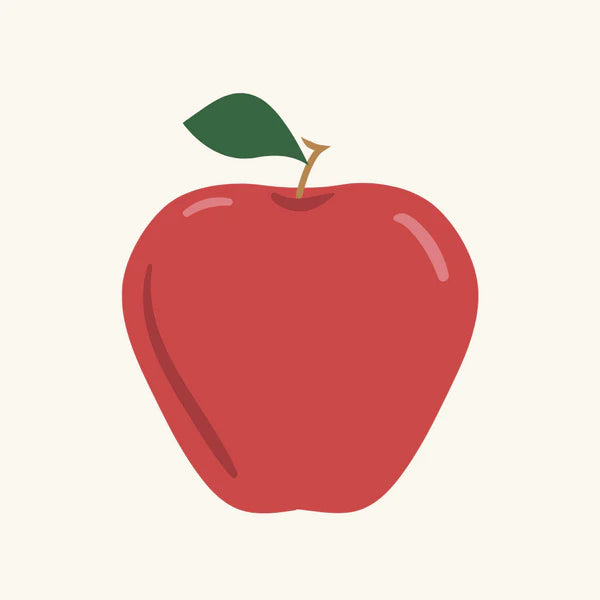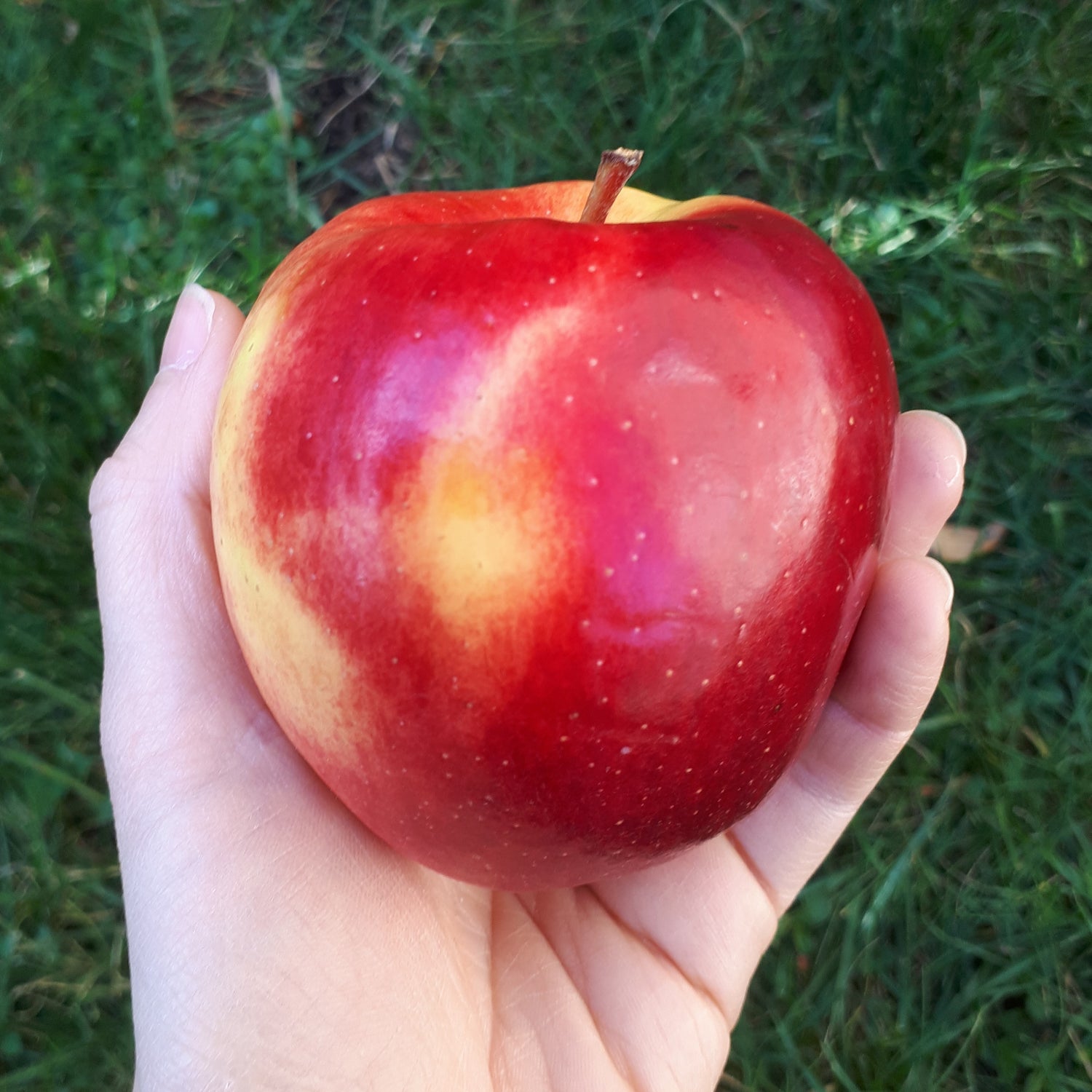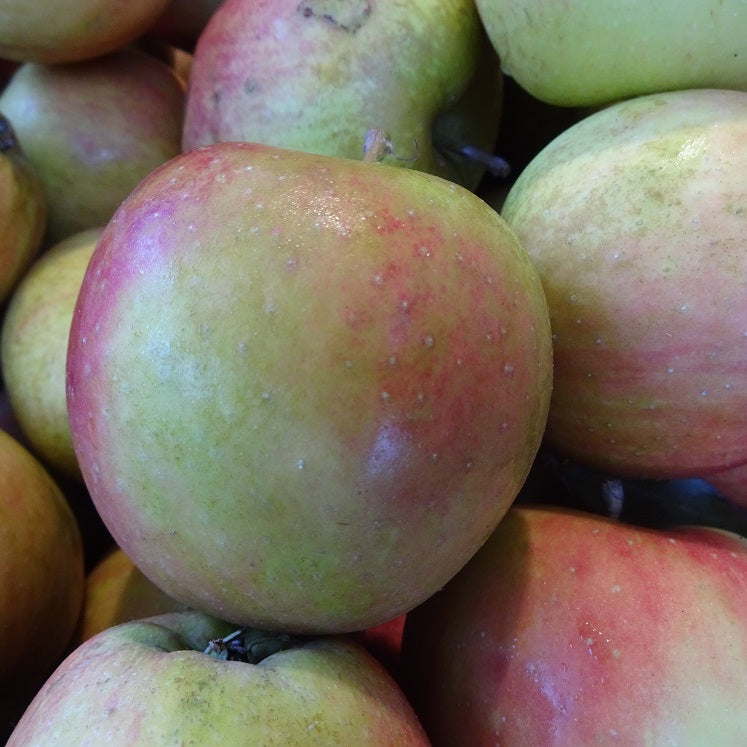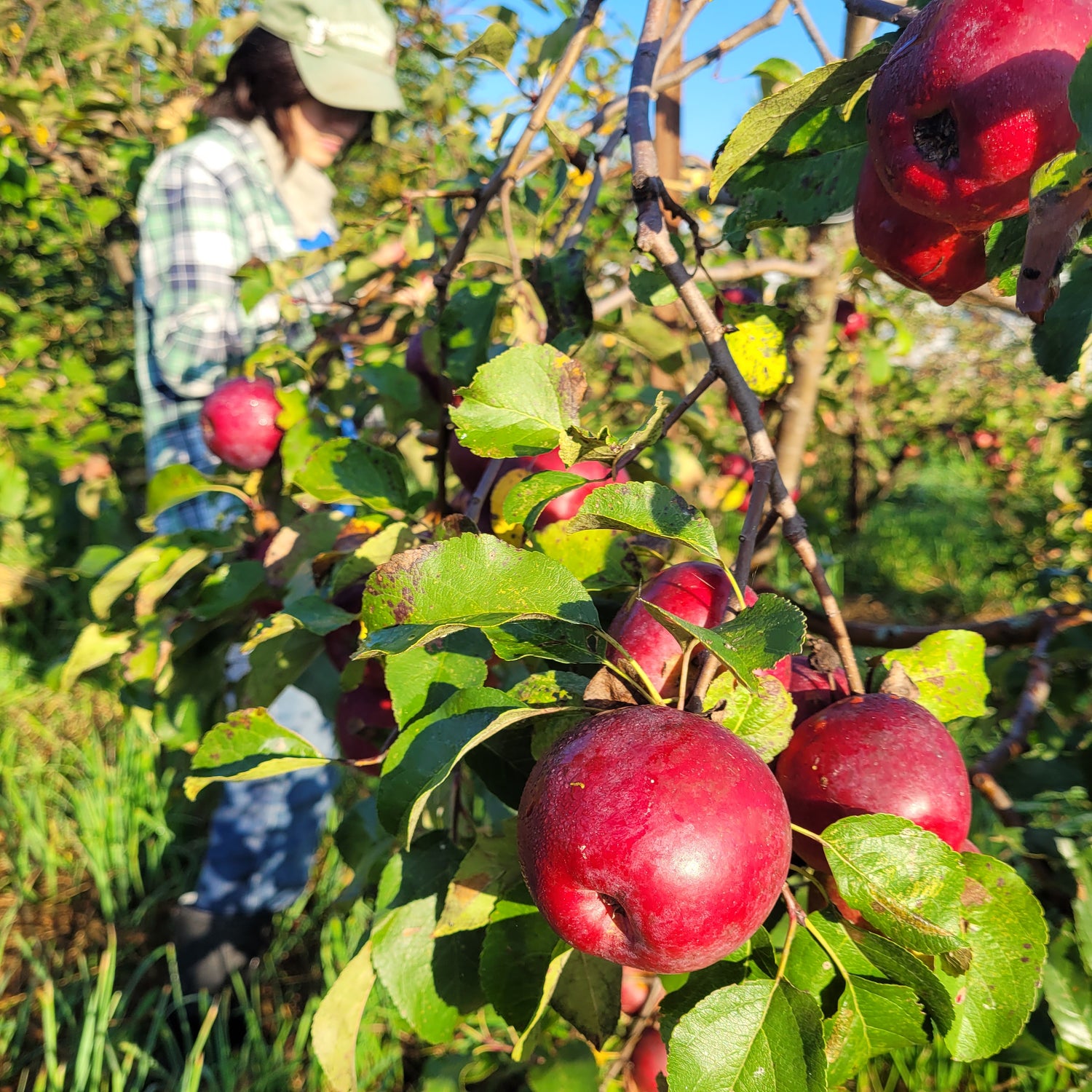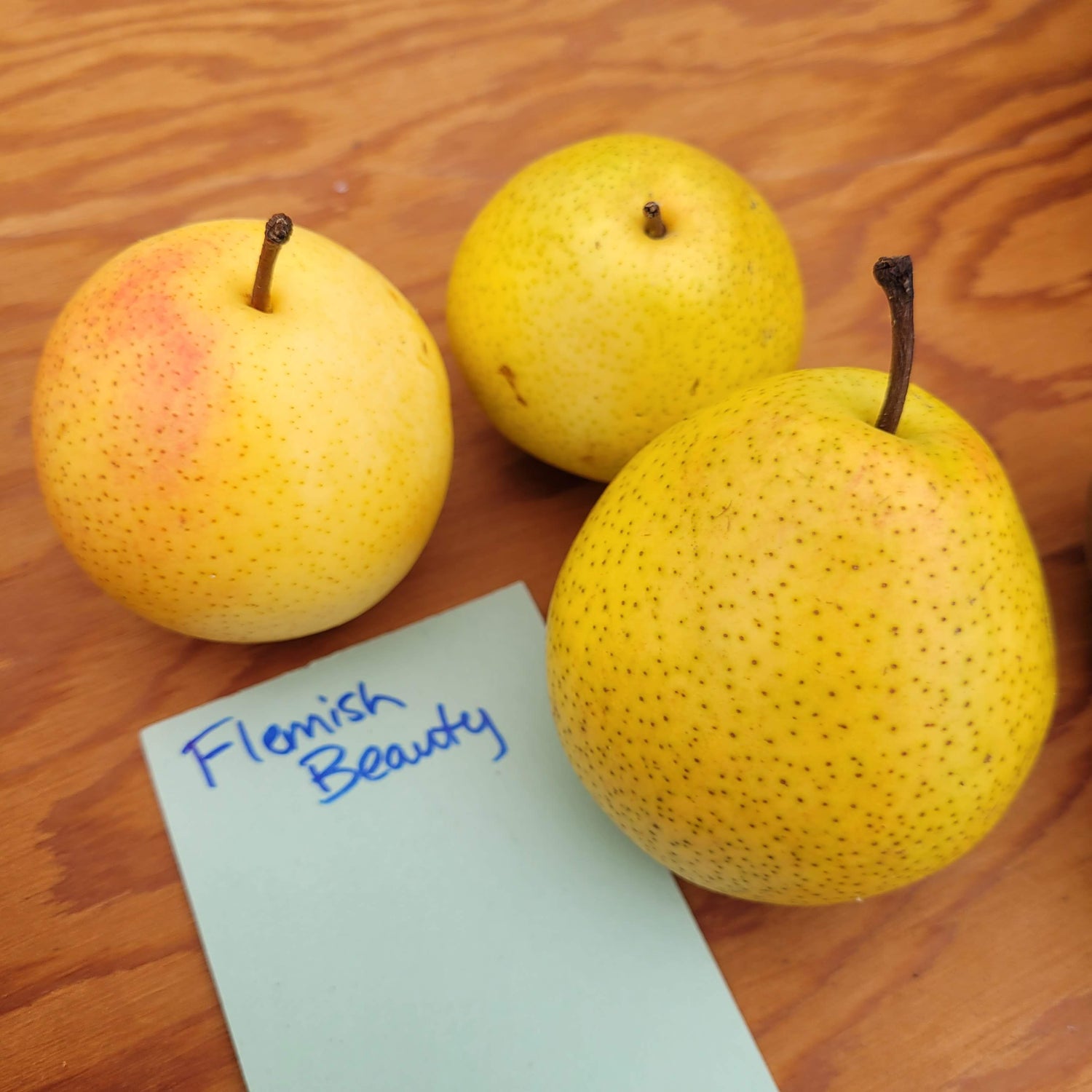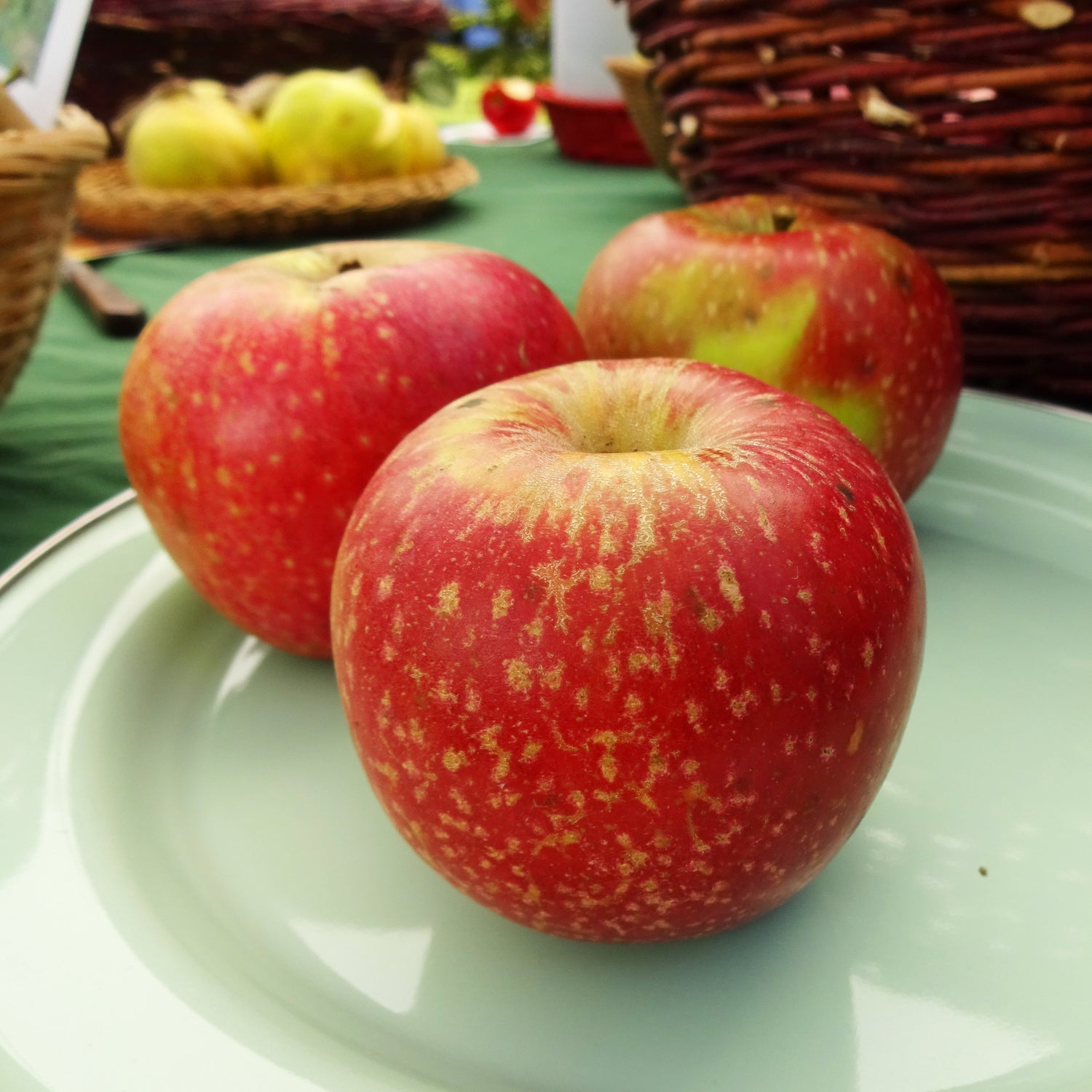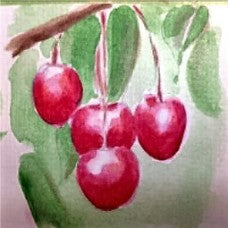All Zone 5 (or hardier) Plants
Sort by:
391 products
391 products
History: The origins of Golden Russet are unclear, but we know it was discovered in New York in the first half of the 1800s. It may have come from the seedling of an English russet variety and could have Ashmead's Kernel parentage. It was grown commercially for some time before falling out of favour, although it has regained some popularity recently due to its strengths in cider production.
Why We Grow It: With both lots of sweetness and acidity, Golden Russet is one of our favourites for fresh eating. The flavourful juice from these apples is also great for making cider. The thick russetted skin discourages insect damage and it is resistant to scab, canker, and powdery mildew. Its tip-bearing habit gives these hardy trees a wispy appearance.
Species: Rubus sp.
History: Heritage raspberries were developed by Cornell University in New York and introduced in 1969. It is one of the most widely grown raspberry varieties in the world due to the quality of its fruit and its extended bearing season. This variety is considered the standard for everbearing varieties and in 2004 it even received the Outstanding Fruit Cultivar Award from the American Society of Horticultural Sciences.
Why We Grow It: On top of the accolades mentioned above, these medium-sized red berries can also be harvested within the first year! You can enjoy them fresh or in baked goods, or freeze, dry, or preserve them to enjoy in the winter months. We find these to be sweeter than Nova, but with a milder flavour and slightly crumbly texture. The canes are thorny so exercise caution when working around this variety! You can cut down the canes in the winter for a large fall crop, or enjoy a more spread out crop from June to September. We have found cutting the patch down annually also helps with borer problems.
The second product photo shows Nova (right) compared to Heritage (left).
The third photo shows a Heritage and Nova raspberry tart Steph made!
History: Bartlett pear, better known as William's Bon Chretien (translated from French as William's Good Christian) or William's pear in Europe, has a long history with unknown origins. What we do know is that in 1483 King Louis XI summoned holy man Francis of Paola to his deathbed and Francis offered the king a pear seed from his birthplace of Calabria in Italy. The name 'Good Christian' was given to the pear as a result. In 1799, this variety was brought to Roxbury, Massachusetts where it was planted and eventually renamed 'Bartlett' by Enoch Bartlett who was unaware of its origins. The mistake was not realized until 1828, by which time "Bartlett" pears were already popular in North America and the mistake could not be undone.
Why We Grow It: Bartlett is the most commonly grown pear in North America and with good reason. Not only is it productive and easy to grow, but it produces large yellow fruit with a delectable flavour.
Note: We graft our Dwarf Bartletts with an Old Home interstem to maintain compatibility between Province Quince rootstock and Bartlett.
History: Northern Spy was first discovered in New York around 1800. It tends to be irregularly shaped and bruises easily, so it is not a popular commercial apple but it is still commonly grown in certain regions in the States today. It is featured in several poems and in 1953 a box of Northern Spy apples was sent to Senator Joseph McCarthy by the Toronto Globe and Mail during his infamous hunt for 'communist spies.'
Why We Grow It: Northern Spy apples are juicy with a balanced sweet-tart honeyed flavour, although they do tend to bruise easily due to their thin skin. To make up for that, they are known for making wonderful pies. The trees are cold hardy and vigorous.
History: Honeycrisp apples were developed by the University of Minnesota in the 1960s and released in 1991. It is one of almost thirty varieties created by the university's breeding program since it began in 1888. The excellent flavour of Honeycrisp has allowed it to become one of the most popular apples in North America and in 2006 it became the state fruit of Minnesota.
Why We Grow It: Honeycrisp is popular for a reason. The apples are large and attractive with good flavour under favourable growing conditions. However, they are not an apple for beginner growers due to issues with some diseases especially in storage, but with diligent care you can produce these crunchy sweet apples in your own backyard/orchard.
Species: Asimina triloba
History: Native to southern Ontario where it is considered a vulnerable species and the central United States, it is believed the range of these trees has shrunk with the extinction of megafauna that likely dispersed the seeds. These oddly tropical fruits have been cultivated by indigenous peoples and European colonizers alike, it is rumoured chilled pawpaw was George Washington's favourite dessert and Thomas Jefferson planted some at Monticello. Although popular among locals and with foragers, pawpaws have failed to achieve any kind of commercial success due to their poor keeping ability and oft difficult pollination.
Why We Grow It: The Pawpaw produces very unique fruit that has a distinct tropical banana/mango flavour and custard-like texture. As it oxidizes fairly quickly once cut open, it is best eaten fresh once fully ripe or made into sauces, ice cream, etc. You can bake and cook with pawpaw like you would with bananas but please take note that some people have reported extreme tummy troubles after consuming cooked pawpaws! Mouse made a no-bake pawpaw cheesecake (pictured on the left), you can find the recipe on our blog here! Pawpaws have a very slow growth habit and grow naturally as an under story tree, usually not reaching over 35 feet. We grow them from seed for increased hardiness compared to grafted stock.
History: Sweet Sixteen was developed by the University of Minnesota and introduced in 1977. It is one of nearly thirty varieties released by the university since its breeding program began in 1888.
Why We Grow It: Some apples taste better when grown in colder climates, and Sweet Sixteen is one of them. For a fresh-eating apple, this is a favourite. Sweet Sixteen provides that crisp first bite that so many people love in an apple, and the pure white flesh will not disappoint for flavour with a very unique, distinct honeyed flavour. Its cold-hardiness and general disease-resistance (tolerant of scab and cedar rust) make it winner for the grower too.
Species: Rubus sp.
History: Nova red raspberries were developed at the AAFC Research and Development Centre in Kentville, Nova Scotia as part of a breeding program. They were bred as a cross between Southland and Boyne raspberries and released in 1981.
Why We Grow It: These nearly thornless canes bear a plentiful yield of bright red, large-sized berries. The finer textured fruit is less crumbly and has a bold flavour. Nova red raspberries are very hardy and are summer-bearing in colder climates and ever-bearing in warmer ones!
The second product photo shows Nova (right) compared to Heritage (left).
The third photo shows a Heritage and Nova raspberry tart Steph made!
History: Crimson Passion dwarf sour cherries are one of several dwarf sour cherries developed and released by the University of Saskatchewan with the goal of creating sour cherries that were cold hardy, shorter in stature, and produced good quality fruit. This initiative began in the 1940s and Crimson Passion was released as part of the Romance series in 2004. It is the sweetest of the Romance series cherries.
Why We Grow It: Crimson Passion produces large sweet fruit, excellent for fresh eating or processing. It contains the same sugar content (20-22 Brix) as sweet cherries, but also contains the tangy flavour of sour cherries, combining the best of both worlds into one cold-hardy shrub. This variety reaches up to 10' at maturity, great for anyone with limited space.
Check our our blog post with some tasty sour cherry recipes!
History: Stella sweet cherries were developed by the Summerland Research and Development Centre in British Columbia in 1956 by K.O. Lapins, after whom Lapins cherries are named. These cherries were named and released in 1968, becoming the first named variety of self-pollinating sweet cherries. They have since become very popular, especially in the UK, and have been awarded the Royal Horticultural Society's Award of Garden Merit.
Why We Grow It: The Royal Horticultural Society was right to commend Stella. These large cherries have skin that is shiny yet extremely dark red, creating a feast for the eyes as well as the mouth! The flesh is medium firm and has a lovely sweet flavour, great for fresh eating as well as canning. Stella is self-pollinating and makes an excellent pollinator for other varieties.
History: Snow, aka Fameuse, apples originated near Lake Champlain in Quebec some time before the 1730s. The exact origin is unclear but this variety is thought to have originated from a seedling or cutting brought from France. From about 1750-1850, this was one of the most commonly grown apples in Quebec until the orchards were almost wiped out in the latter half of the 19th century by disease and failed to regain their popularity. However, these lovely apples may still be with us in their own way as they are one of the potential parents of McIntosh.
Why We Grow It: It is easy to see why Snow apples were once so popular. These apples have a lovely deep red skin with pure white flesh with a sweet strawberry flavour. These trees are also quite cold hardy and produce heavy crops.
History: Roxbury Russet is the oldest American apple still under cultivation. It was discovered around 1650 in Roxbury, near Boston. These apples were well-known for their long keeping ability and qualities for cider making. They were grown by Thomas Jefferson at Monticello and are even referenced in one of Nathanial Hawthorne's novels. Due to the russet skin, these apples have never achieved true commercial success but they can still be commonly found in American farmer's markets.
Why We Grow It: Aside from its historic roots, Roxbury Russet is an excellent all-around apple that can be eaten fresh, used in cooking, and made into a great cider. It has a nice flavour that is sweet and sharp. This variety is also a good choice for organic orchards.
History: Cox's Orange Pippin was first grown in England in 1830 and was named after the retired brewer and horticulturalist who first bred it, Richard Cox. Its excellent flavour has earned it a spot as one of the best fresh eating apples in England where it has remained popular ever since. In fact, it still accounts for over 50% of fresh eating apples grown in the UK today. Despite its reputation, it is seldom grown commercially in North America due to its precocious nature and susceptibility to many common apple diseases.
Why We Grow It: This apple's reputation is hard to ignore with its sweet, subtle, aromatic flavour and attractive orange-red skin. Not only is it good for fresh eating, it is also popular in cider blends.
History: Freedom was developed in a breeding program at the New York State Agricultural Experiment Station in Geneva, New York in 1958. The goal was to create an apple that was immune to apple scab, and this particular variety was chosen from 120 other apples that were planted out from seed selected through an intensive breeding program. It was released in 1983 and given the name Freedom to represent its freedom from apple scab.
Why We Grow It: Low maintenance, disease-resistant, vigorous, good flavour, and a good keeper... all in one apple! Freedom is the perfect variety for growing organically, for pick-your-owns, backyards, and community orchards. Large red skinned apple, similar to McIntosh in flavour with sweet, subacidic, sprightly flavour and juicy white flesh. Crunchy, fine grained flesh.
Species: Ribes nigrum
History: Titania black currant was developed by Pal Tamas in Sweden. It was bred as a cross between the varieties Consort, Kayaanin Musta, and Altaskaya Dessertnaya in 1969 and chosen for further evaluation in 1974. Since its release it has become one of the most popular currants in North America.
Why We Grow It: It is easy to see why Titania has become so popular. It produces large, juicy berries with a rich, mild flavour. It is also resistant to White Pine Blister Rust and mildew. The berries are great for a variety of uses, such as the black currant scones and black currant and blueberry tarts Steph made (see pictures)!
History: Debbie's Gold was introduced by Aubins Nursery in Manitoba in 1980.
Why We Grow It: Debbie's Gold is a relatively new but promising apricot variety for us. It is very cold hardy and late blooming, which improves the chance of a crop in our climate. It produces small fruit with a rich apricot flavour with spicy notes.
Species: Symphytum sp.
History: Comfrey plants are native to various continents around the world including Europe, Asia, and North America. Common names such as boneset and knitbone and its genus name referencing the Greek 'symphis' meaning 'growing together of bones' indicates it may have been used medicinally for mending bones. Comfrey is now popular as a permaculture plant.
Why We Grow It: This classic permaculture plant grows incredibly deep tap roots, mining rich nutrients from deep below the soil surface. It's a living mulch that 'molts' 3-4 times each season. It's used in traditional medicine and creates a healthful compost tea full of calcium and potassium. It grows up to 70 cm tall, before molting down, and spreads slowly over the years. As an added benefit, both honey bees and bumble bees love visiting the blossoms too!
2025 Staff Favourite
Scotia Elderberries are Jenni's favourite this year! In Jenni's opinion “this variety is sweeter and less astringent than others, and I love using it to make elderberry syrup for an immune system boost in the winter months.”
All Staff Favourites are 20% off. The Staff Favourite Discount cannot be combined with other quantity discounts.
Species: Sambucus canadensis
History: Scotia was developed at the Kentville AAFC Research and Development Centre in Nova Scotia. It is a seedling of another variety, Adams 2, and was released by the research station in 1960, alongside the variety Nova. It is grown commercially in Canada.
Why We Grow It: Scotia elderberries ripen early in the season and have the highest sugar content of any named cultivar- though also some of the smallest berries. They are great for a variety of uses such as making juice and wine, baked goods, and even tinctures. Eating the raw elderberries can cause adverse reactions so it is recommended that you cook them first!
History: The creation and selection of Empire apples was a lot more intense compared to the chance origins of some of our older varieties. In 1945, scientists from the Cornell University New York State Agricultural Experiment Station collected thousands of seeds from the orchard of fruit nutritionist Lester C. Anderson. For years these seeds were grown and tested until Empire emerged as the best apple from amongst its siblings. It was released to the public in 1966 and has since become one of the top ten most popular apples in North America.
Why We Grow It: Empire is an excellent general-purpose apple for the Great Lakes area. The attractive green and red fruit is crisp and sweet and keeps well into the winter. The trees crop heavily and reliably, and the fruit is resistant to bruising, making life easier for the grower. They are also resistant to fireblight and cedar apple rust.
Species: Sambucus canadensis
History: York was developed at the New York Agricultural Experiment Station in Geneva, New York in 1964. It is a cross between the varieties Adams 2 and Ezyoff.
Why We Grow It: York is known for producing exceptionally large berries that are quite flavourful. This variety is also quite productive, a good choice for fans of these delightful dark purple berries! Eating the raw elderberries can cause adverse reactions so it is recommended that you cook them first.
History: Not to be confused with Pink Lady, Pink Pearl was developed by breeder Albert Etter who had the goal of creating red-fleshed apple varieties from seedlings of Surprise, a red-flashed variety. In 1940, he partnered with the California Nursery Company to bring some of these varieties to the public. Pink Pearl was selected as the best amongst his seedlings and released in 1945.
Why We Grow It: One of Steph's favourites! Pink Pearl is a delicious apple that is crisp with a pronounced unique fruity flavour and a nice blend of sweetness and sharpness. Its yellow-pink skin conceals a bright pink interior that is stunning to see compared to the white-ish flesh of most apples. It is great fresh or for applesauce, and it is relatively slow browning- it can be cut and bagged in the fridge the night before with very little change in colour the next day. Their pink colour adds a unique visual appeal to baked goods as well, such as with the gooseberry and Pink Pearl tarts Steph made pictured here!
History: Redhaven peaches were created at Michigan State University's South Haven Research Center as part of the Haven series which began in 1924. Redhaven in particular was developed in the 1930s and released in the 1940s, making it the first commercial red-skinned peach variety. It is now one of the most commonly grown peaches in the world.
Why We Grow It: Redhaven is the most popular peach in North America, its sweet fruit being great for just about anything. The fruit is attractive, juicy, and flavourful and is slow to brown. The flesh does not turn brown when cut as quickly as other varieties. To ensure you can enjoy this great peach as much as possible, the tree begins bearing fruit at a young age, bears heavy crops, and the fruit ripens over a prolonged period of time which requires multiple harvests.
Bare Root Peach Trees
We are very pleased to be able to offer peach trees to our customers. They are both challenging and rewarding plants to grow. However, due to the unique challenges of growing peach trees, and the increased care required for their success, we regrettably cannot offer our standard 90 day guarantee on peaches. Please inspect your peach trees to your satisfaction when you pick them up at the nursery, or immediately upon arrival if they are shipped. For shipped trees, make your claim within 7 days of receipt of the trees. After 7 days of receipt, you will have been deemed to have accepted the trees in as-is condition.
History: Nova Easygro was developed at the AAFC Kentville Research and Development Station in Nova Scotia and introduced in 1971.
Why We Grow It: Living up to its name, Nova Easygro is hard to beat if you're looking for a low-maintenance backyard tree or a clear winner for organic orchards. This variety is resistant to numerous common apple diseases and tastes great. The flavour is pleasant and sweet and the flesh is firm and white with the perfect texture, earning this apple favourable reviews at our tasting event.
History: Cortland apples were first bred in 1898 by Cornell University in New York and introduced in 1915. Since then, they have become one of the top fifteen apples in the US and Canada, although the majority are still grown relatively close to the university where they originated. Cortland Nova Red is a redder sport of the original Cortland apple, making a more attractive fruit for those who value red apples.
Why We Grow It: Cortland is a sweet apple with crisp, juicy flesh. It is great for applesauce or drying as the flesh is slow to brown. The fruit keeps until Christmas under home storage conditions although the crispness and flavour does fade over time. This variety crops well annually and makes a good pollinator for others. The redder skin on this sport is quite attractive!
History: A chance seedling discovered in the 1980s in BC, this tender, aromatic, honeyed apple has been a hit ever since!
Why We Grow It: This delicious apple is very popular in the fresh eating market in Canada, thanks to its attractive bi-colour skin and slow browning qualities. It produces a medium-large fruit and is a good cropper.
History: This apple was discovered as a chance seedling in 1856 in Boskoop, Netherlands where it has remained popular ever since.
Why We Grow It: Here's one for those of us who love some sharpness in an apple. With its sharp taste and large, greenish-red fruit, this apple is still popular at farmer's markets throughout Europe for both fresh eating and cooking (keeps its shape). It has value as a sharp in hard cider blends as well.
History: Liberty was developed by the New York State Agricultural Experiment Station in Geneva, NY, in 1955 and released in 1978. It is a cross between Macoun and a Japanese crabapple (Malus floribunda), bred in hopes of achieving the disease resistance of the Japanese crabapple.
Why We Grow It: The creators of Liberty were highly successful in their goal, creating one of the most disease-resistant varieties. Liberty is a favourite for organic production as a result. The fruit is bright red with sweet, creamy flesh and it stores well.
History: Flemish Beauty originated in Belgium in the early 1800s. At one point Flemish Beauty was one of the most common commercial varieties in the US.
Why We Grow It: Flemish Beauty's cold hardiness and good flavour makes this a popular variety. The fruit is large and greenish-yellow without much neck. It is known for being sweet and very juicy, great for fresh eating.
History: Esopus Spitzenberg was discovered near Esopus, New York in the early 1700s. Its main claim to fame is its supposed designation as Thomas Jefferson's favourite apple, a claim supported by the numerous Esopus Spitzenberg trees he had planted at his plantation Monticello. This apple was very popular in the US in the 1800s, considered one of the best for fresh eating, valuable for cooking, and a nice addition to cider blends.
Why We Grow It: The flavour of this particular variety is complex with high acid content, considered by many to be a high quality fresh-eating apple. This is helped by the attractive medium sized fruit which sports bright red skin. This variety keeps, with good flavour, until March. Despite being susceptible to just about every common apple disease, we still believe this apple is worth the extra effort and haven't had much issue growing it here.
History: Compact Stella was developed at the Brookhaven National Laboratory in New York where dormant Stella scions underwent X-ray irradiation in 1964. This caused a mutation to occur, creating a cherry tree that was smaller in stature when fully grown than regular Stella cherry trees. In 1973 this smaller version of Stella was given the name Compact Stella.
Why We Grow It: Compact Stella sweet cherry trees bear very dark red heart-shaped fruit that is of high quality for fresh eating, and equally well-suited for canning, drying, or freezing. This compact version of the popular Stella sweet cherry is great for anyone with limited space. The typical mature height is 8-10 feet (2.5-3.0m), though they can reach up to 12 feet in optimal growing conditions.

